Lettre d’information de l’Ifao
Juillet 2023
Rubriques : (-) À la une (-) Nouvelles des chantiers et des programmes (-) Vie du Palais (-) Quelques questions à Hani Moawad...(-) Le carnet de l'Ifao (-) Manifestations scientifiques (-) Rencontres scientifiques (-) Sur la chaîne Youtube de l'Ifao (-) Publications

◼︎ Le grand hall de l'escalier d'honneur du palais Mounira après restauration (Photo ©Ihab Ibrahim/Ifao).
À la Une
|
Ces deux dernières années, l'Ifao a connu d'importants travaux d'entretien, de restauration et d'embellissement sous la direction de Damien Fréjaville, responsable sécurité et immobilier. Lorsqu'ils entrent dans l'enceinte du palais Mounira, les visiteurs peuvent désormais mieux admirer la magnificence de la façade occidentale. Elle a été restaurée en 2021 - 2022 dans la plus stricte conformité possible de l'existant, qui renvoie pour l'essentiel à l'année 1929, année pendant laquelle la façade avait été en partie repensée ; en particulier, les décors Art nouveau avaient été transformés en décors néo-classiques. |
||
|
Après être entrés dans le palais et avoir traversé le hall d'accueil où se trouvent, notamment, le bureau de la responsable de l'accueil, Maha Yassin, et la librairie, les visiteurs peuvent aussi, depuis peu, (re)voir briller de mille feux le grand hall de l'escalier d'honneur qui mène à la bibliothèque. En effet, ces derniers mois, les restaurateurs ont surtout accordé leur attention aux murs du grand hall, rendus à toute leur splendeur la semaine qui a précédé la Journée de l'archéologie, s'étant tenue le 22 juin, ainsi qu'à différentes pièces du parquet du couloir de passage menant à l'aile administrative, qui avaient été maltraitées par le temps. D'autres travaux devraient suivre cet été, en particulier ceux de restauration de la terrasse de la bibliothèque. De tels travaux ont un impact sur la vie de l'institut. Ceux du grand hall de l'escalier d'honneur ont nécessité d'adapter les déplacements, et donc de faire évoluer les modalités d'organisation des manifestations scientifiques et de diffusion du savoir. Pour autant, l'activité de l'Ifao n'a pas été affectée. Bien au contraire, elle n'a jamais été aussi dense et diversifiée que pendant ce premier semestre de l'année 2023. Cela s'explique probablement par la fin du rattrapage des retards provoqués par les restrictions générées, les années précédentes, par la COVID-19. Cela s'explique aussi par le rayonnement de l'Ifao, dont la programmation scientifique recoupe une centaine d'opérations, parmi lesquelles il faut compter près de 35 missions archéologiques, ainsi que par les actions relevant de la formation scientifique, qui est désormais sous la responsabilité de Mathilde Prévost. Elle a notamment lancé le séminaire "Current developments and methods in History and Archaeology of Ancient Egypt", qu'elle a organisé avec Bassem Gehad (MoTA) dans le cadre d'un partenariat Ifao - MoTA. خلال العامين الماضيين، قام المعهد الفرنسي للآثار الشرقية بأعمال صيانة وترميم وتجميل كبيرة تحت إشراف دميان فريجافيل، مسؤول قسم الصيانة والأمن. عند دخول الزائرين قصر المنيرة، يمكنهم الآن تأمل روعة الواجهة الغربية التي تم ترميمها وإعادة طلائها خلال عام ٢٠٢١ - ٢٠٢٢ لتحاكي قدر المستطاع ما كانت عليه الواجهة عام ١٩٢٩، حيث تم إعادة تصميم الواجهة بشكل جزئي لا سيما من خلال تحويل الزخارف التي تنتمي لطراز الآرنوڤو إلى زخارف على طراز النيوكلاسيك. Le logo de l'Ifao redessinéLa dynamique d'embellissement qui a marqué ce semestre s'est aussi exprimée dans le toilettage du logo de l'Ifao. Il est inspiré d’une peinture de la tombe d’Inherkhâouy (TT359) de Deir el-Medina : deux lions adossés qui reproduisent, par la forme qu’ils dessinent, l’horizon Akhet, derrière lequel le soleil se lève ou se couche. Le nouveau graphisme correspond à la volonté de modernisation et d’épuration du logo précédent, utilisé depuis environ 70 ans. Il témoigne d'une volonté de retour aux sources. Le graphisme vise à reprendre plus fidèlement les traits initiaux du dessin de la tombe de d’Inherkhâouy, le sigle étant rendu plus lisible grâce à un effet de superposition des lettres qui le composent. تصميم جديد لشعار المعهدبالإضافة إلى أعمال تطوير المعهد خلال النصف الأول من هذا العام، تم إعادة تصميم شعاره المستخدم منذ حوالي ٧٠ عامًا. الشعار المستوحى من نقش في مقبرة ان حر خعو بالمقبرة ٣٥٩ بدير المدينة، والذي يمثل أسدان ظهرهما متقابلان يعيدان من خلال تموضعهما رسم العلامة الهيروغليفية للأفق «آخت» حيث تشرق الشمس وتغرب. يتوافق التصميم الجديد مع الرغبة في العودة إلى الجذور وتحديث الشعار السابق وتنقيته، حيث تم إعادة إنتاج خطوط الرسم الأصلية لرسم مقبرة ان حر خعو بشكل أكثر دقة، كما أصبح اختصار حروف المعهد مقروءا بشكل أفضل بتأثير تداخل الحروف التي تكونه. Nouvelles des chantiers et des programmesDouze missions archéologiques ont pu se tenir au premier semestre : les chantiers du Désert Oriental, de Balat, de Deir el-Medina, des Sanctuaires osiriens à Karnak, du Ouadi Sannour, de Coptos, de Medamoud, de Tebtynis, de Plinthine/Taposiris, de Philadelphie, de Bouto et de Ayn Soukhna. Quatre missions (Baouit, Karnak nord, Dendara épigraphie et Ouadi Jarf) ont dû être annulées ou reportées. A Balat, fouillé par l'Ifao depuis 1977, les archéologues ont repris les travaux de terrain sur le site de Ayn Asil, au nord de la fortification de la VIe dynastie où sont supposées se trouver les plus anciennes occupations. Des niveaux remontant à la Ve dynastie y ont été identifiés.
◼︎ Fouilles de Tebtynis (Fayoum), campagne 2023, mars-avril. Visite le 20 avril de l'ambassadeur de France en Egypte, Marc Baréty , et de son épouse, du directeur des études, Abbès Zouache, et du responsable de l'archéologie, Joachim Le Bomin.- (© A. Bahgat/Ifao) La très grande majorité des missions et des manifestations réalisées dans le cadre de la programmation scientifique ont aussi pu avoir lieu. Plusieurs colloques ont permis de réunir des chercheurs venant de différents horizons disciplinaires ; ils se sont inscrits dans le cadre de partenariats internationaux, tel le colloque Writing performances organisé par Chloé Ragazzoli (SU) et Carole Roche (Ifpo). Malak Labib, membre scientifique, a aussi organisé avec Pascale Ghazaleh (American University of Cairo) un colloque international intitulé Impossible archives ? , visant à s'interroger sur la fabrique du savoir à partir des archives égyptiennes contemporaines ; son importance a été saluée par l'ensemble de la communauté scientifique. L'histoire de l'Ifao a été mise à l'honneur lors du colloque L'imprimerie et l'Egypte, organisé par Fabien Simon (Université Paris Cité) à l'Ifao les 26 et 27 avril. Pendant les débats, l'institut est apparu à la croisée des circulations typographiques en Méditerranée et au-delà, pendant le long XXe siècle. أخبار البعثات الأثرية والبرامج العلميةتمت أعمال ١٢ بعثة حفائر أثرية في النصف الأول من العام: بعثة الصحراء الشرقية وبلاط ودير المدينة والمقاصير الأوزيرية في الكرنك ووادي سنور وقفط ومدامود وتبتينيس وبلانتين/ تابوزيريس وفيلادلفيا وبوتو والعين السخنة. بينما ألغيت أو تأجلت أربع بعثات (باويط وشمال الكرنك ودندرة (بعثة دراسة النقوش) ووادي الجرف). في موقع العمل الأثري بلاط الذي يجري فيه المعهد اعمال حفائر منذ عام ١٩٧٧، استأنف علماء الآثار العمل الميداني في موقع عين أصيل عند شمال سور حصن يرجع تاريخه إلى عصر الأسرة السادسة حيث من المفترض وجود أقدم المستوطنات. وتم تحديد المستويات التي تعود إلى الأسرة الخامسة. وأقيمت بنجاح معظم البعثات الأثرية والفعاليات التي كانت مدرجة ضمن البرنامج العلمي. كما جمعت العديد من المؤتمرات باحثين من تخصصات مختلفة في إطار شراكات دولية، مثل المؤتمر الدولي «استعراضات الكتابة» الذي نظمته كلويه راجازولي (جامعة السوربون) وكارول روش (المعهد الفرنسي للشرق الأدنى). كما نظمت ملك لبيب، العضوة العلمية بالمعهد، مع باسكال غزالة (الجامعة الأمريكية بالقاهرة) مؤتمرًا دوليًا بعنوان «الأرشفة المستحيلة؟» بهدف النظر في صناعة المعرفة انطلاقًا من الأرشيف المصري المعاصر؛ وقد أشاد المجتمع العلمي بأسره بأهمية هذا المؤتمر. تم إلقاء الضوء على تاريخ المعهد الفرنسي للآثار الشرقية خلال المؤتمر الدولي «الطباعة ومصر» الذي نظمه فابيان سيمون (جامعة باريس سيتيه) في المعهد يومي ٢٦ و٢٧ أبريل. وخلال المناقشات، برز المعهد كملتقى التداولات التيبوغرافية في منطقة البحر المتوسط وخارجها على مدار القرن التاسع عشر |
◼︎ Le classique logo de l'Ifao, en vigueur depuis environ 70 ans, reçoit un coup de jeunesse.
◼︎ Journée de l'archéologie France Égypte 2023.
◼︎ Atelier découverte du métier de l'archéologue avec les élèves du Lycée français du Caire. (© A. Bahgat/Ifao)
◼︎ Fouilles de Plinthine sur la côte méditerranéenne en mai 2023 (© A. Bahgat/Ifao)
◼︎ Colloque de clôture du programme Écritures à l'Ifao en juin 2023. |
|
Vie du PalaisBien-être au travail Le palais n'a pas seulement été embelli. Des activités conviviales y ont aussi été organisées. L'idée de favoriser le bien-être au travail et même d'encourager la pratique sportive hors temps de travail est née lors de discussions formelles ou informelles entre la direction de l'Ifao et les représentants du personnel. Il s'agissait, aussi, de développer l'interaction entre les agents, et de gérer donc au mieux la sortie de la crise générée par la COVID-19, qui avait restreint les relations interpersonnelles, l'Institut ayant même dû, alors, être fermé à plusieurs reprises. Des activités ping-pong et yoga ont donc été mises en place. Très vite, elles ont montré toute leur utilité, en particulier en matière de renforcement des relations entre les agents des différents services. Le succès a été tel qu'un tournoi de ping-pong a été créé en mars, qui a impliqué non seulement les agents de l'Ifao, mais aussi ceux de l'Institut français d'Egypte. Eco-responsabilité Le Palais a aussi brui des actions du groupe éco-responsable créé en décembre 2022. Ce groupe de volontaires s’est constitué dans le but de sensibiliser le personnel sur les enjeux du développement durable et de promouvoir des actions concrètes. Un calendrier a été établi, avec un thème par mois ; à chaque fois, le sujet et des objectifs proposés ont été diffusés dans l’établissement au moyen d’une affiche, et des actions (conférences, visites, ateliers, installations…) ont été organisées. Ainsi, au mois de janvier, consacré au recyclage du papier, des corbeilles ont été disposées dans la bibliothèque et dans les bureaux, et la collecte a été organisée en collaboration avec les zabalins ("chiffonniers du Caire"), qui ont donné à cette occasion une conférence. Ont suivi les thèmes du recyclage d’autres matériaux en février, des alternatives aux protéines animales en mars (avec la mise en œuvre d’un jardin-potager et d’un compost), des alternatives aux déplacements en voiture en avril, de l’utilisation de la climatisation et des appareils électriques en mai, et de la sobriété numérique en juin. حياة القصرالرفاه في العملإن أعمال التطوير لم تشمل مبنى القصر فحسب، بل سعى المعهد إلى تنظيم أنشطة ودية أيضًا. ولدت فكرة تعزيز الرفاه في العمل والتشجيع على ممارسة الرياضة خارج ساعات العمل خلال المناقشات الرسمية وغير الرسمية بين إدارة المعهد وممثلي العاملين. كان الهدف منها هو تشجيع التفاعل بين الموظفين، وبالتالي تحقيق إدارة أفضل للخروج من الأزمة الناتجة عن جائحة الكورونا التي أدت إلى تقييد العلاقات بين الأشخاص، حتى أن المعهد اضطر حينها إلى الإغلاق عدة مرات. ولذلك تم تنظيم أنشطة مثل البينج بونج واليوجا. وفي وقت قصير، أثبتت تلك الأنشطة أهميتها لا سيما فيما يتعلق بتعزيز العلاقات بين موظفي الأقسام المختلفة. كان النجاح كبيرًا لدرجة أنه تم إقامة بطولة بينج بونج في مارس، ضمت العاملين بالمعهد بل وموظفي المعهد الفرنسي في مصر أيضًا. المسؤولية البيئيةشهد القصر أيضًا أعمال مجموعة العناية بالبيئة التي تكونت في ديسمبر 2022. تهدف هذه المجموعة المكونة من متطوعين إلى زيادة وعي الموظفين بتحديات التنمية المستدامة وتعزيز الإجراءات الملموسة. تم إعداد جدول زمني يتطرق إلى موضوع مختلف كل شهر. في كل مرة، يتم نشر الموضوع والأهداف المقترحة في المعهد عن طريق الملصقات، ويتم تنظيم أنشطة (مثل اللقاءات والزيارات وورش العمل ...). فمثلًا، في شهر يناير المخصص لإعادة تدوير الورق، تم وضع سلات في المكتبة والمكاتب لهذا الغرض. وتم جمع الورق الموجود بالسلات بالتعاون مع أفراد من حي الزبالين الذين انتهزوا الفرصة لعقد لقاء عن الموضوع. تبع ذلك موضوعات إعادة تدوير المواد الأخرى في فبراير وبدائل البروتينات الحيوانية في مارس (تلاها إقامة حديقة نباتية وكمبوست) وبدائل التنقل بالسيارات في أبريل واستخدام مكيفات الهواء والأجهزة الكهربائية في شهر مايو والاعتدال في الاستخدام الرقمي في يونيو. |
◼︎ Tournoi de Pingpong organisé en mars avec les collègues de l'IFE (© A. Bahgat/Ifao) ◼︎ Le nouveau jardin-potager de l’Ifao (début avril 2023) |
|
Quelques questions à Hani Moawad..
Hani Moawad Nessim a rejoint l'Ifao il y a six ans. Progressivement et avec une patience infinie, il est parvenu à rénover toutes les machines anciennes de l'imprimerie. C'est à son expertise et à son investissement que l'institut doit d'avoir donné une nouvelle vie à l'ancienne imprimerie...انضم هاني معوض نسيم إلى المعهد الفرنسي للآثار الشرقية منذ ست سنوات. تمكن تدريجيًا وبصبر غير محدود من تجديد جميع الآلات القديمة الموجودة بمطبعة المعهد. بفضل خبرته وعمله الدؤوب، يدين له المعهد بإعادة إحياء المطبعة القديمة … 1. Pouvez-vous vous présenter et nous dire succinctement comment et dans quel contexte vous avez commencé à travailler à l'Ifao ?Je suis actuellement le responsable de la maintenance des machines de l’imprimerie de l’Ifao, où je suis arrivé en 2016. J'y participe aussi aux différentes tâches de façonnement et de préparation des publications. Depuis mon enfance, je n’ai qu’une passion : les machines. Mon jeu préféré, pendant l’adolescence, était de démonter et remonter les anciennes horloges. Je possède mon propre atelier d’impression depuis 2010. Avant d'y être recruté, j'avais l'habitude de collaborer de temps en temps avec l’imprimerie de l’Ifao pour prêter main-forte à la préparation des livres en période de forte demande. Fin 2016, j'ai décidé de fermer mon atelier et de vendre mes machines, du fait d'une importante baisse de mon activité. L'Ifao m'a contacté pour acquérir l'une de ces machines, puis m'a sollicité pour former l’équipe destinée à l'utiliser et à l'entretenir. On m'a aussi demandé si j'étais prêt à effectuer divers travaux de maintenances sur d'autres machines d’impression, ou à aider l'équipe de maintenance lorsqu'elle était trop occupée ou en difficulté. En vous répondant, je repense à ma première collaboration avec l'Ifao, que je n'oublie évidemment pas. C'était pour les finitions du livre Instantanées d’Égypte, imprimé à 500 exemplaires. Suite à cette collaboration, l’institut m’a proposé un contrat permanent, et j'y travaille donc depuis six ans. 2. On considère que c'est à vous qu’on doit la nouvelle vie donnée à l'ancienne imprimerie et d'avoir rénové toutes ses machines. Pouvez-vous nous en parler ?Quand j'ai commencé à travailler à l’imprimerie de l’Ifao, toutes les machines de la vieille presse ne fonctionnaient pas. Elles étaient regroupées dans l’ancienne fonderie et quelques visites étaient organisées pour les montrer. À cette époque, il y avait un projet d’inventaire de la vieille presse en coopération avec certains chercheurs de l'université allemande GUC. Ce groupe a suggéré d’essayer de faire fonctionner la presse à pédale, la machine la plus simple mécaniquement et dont le fonctionnement est courant. Un technicien amené par ce groupe a essayé de la démonter, mais il n'y est pas parvenu. On a fait appel à moi pour aider dans cette tentative, sachant que l'ancien directeur du Pôle éditorial, Mathieu Gousse, connaissait mon penchant pour les machines et que j'avais déjà participé à l'entretien de certaines machines de l'imprimerie. J'ai réussi à la restaurer seul, ce qui a poussé Mathieu Gousse à se demander (c'était ambitieux, à l'époque !) s'il allait être un jour possible de remettre en état de marche les autres machines, en particulier la machine à frapper les hiéroglyphes. Mathieu Gousse m'a suggéré d'y réfléchir, et de voir ce qu'il était possible, en me promettant de m'apporter toute l'aide nécessaire, et de m’accorder tout le temps que je souhaiterais. J'ai été tout de suite emballé par le projet. Ma première demande a été de prendre contact avec Monsieur Hossam Mowafi, qui était à la retraite et qui était le seul à avoir travaillé sur la Monotype dans sa jeunesse. Il fallait donc le faire revenir à l'institut, ce qui a été fait. C'est ainsi qu'avec M. Hossam, j'ai procédé à la restauration de cette machine étape par étape. Elle était dans un bon état. Nous l'avons démontée et huilée, nous avons traité ses pièces et remplacé celles qui étaient endommagées. En l'espace d'un mois, nous avons pu la faire fonctionner ! Ce fut une agréable surprise pour tout le monde, et nous avons organisé des visites pour les collègues de l’Ifao et nos partenaires afin qu'ils puissent voir la machine en action. Ce succès et les connaissances accumulées en démontant et en réparant la Monotype m’a permis d'avancer avec confiance vers la réparation de la fondeuse des caractères hiéroglyphes. Je l'ai démontée, comme la première machine, pièce par pièce. J'ai identifié les pièces endommagées et j'ai fait fabriquer de nouvelles pièces similaires. Il m'a fallu plus de deux mois pour parvenir à la faire fonctionner. Le premier caractère qui en est sorti est l'Ankh, la clé de la vie. Et là, j'ai été surpris par le grand intérêt de la presse locale et internationale qui a accompagné notre annonce du fonctionnement de cette machine, car moi, je n'ai fait que réparer une machine de plus, comme je le fais d’habitude ! 3. Quels sont les projets futurs pour le développement de l'ancienne presse, ou le "Conservatoire des métiers de l'imprimerie" comme nous préférons l'appeler à l'Ifao ?L'étape suivante a été d'organiser le matériel existant : nettoyer, classer et organiser les caractères en plomb dans des vitrines recouvertes de verre afin de les conserver dans de meilleures conditions. Nous travaillons aussi à compléter la fonte hiéroglyphique afin d’avoir l'ensemble des caractères disponibles. Je mets également mes compétences au service de l’imprimerie en général. J'ai également fabriqué une machine électrique pour la dorure afin d'améliorer la sécurité dans l'atelier. C'est à tout cela que nous nous consacrons, désormais. Comme vous le voyez, l'imprimerie et son musée vont continuer à rayonner ! |
◼︎ Hani Moawad
◼︎ Démonstration du fonctionnement de la Monotype par Hossam Mowafi dans le cadre du colloque 'L'imprimerie et L'Égypte', organisé à l'Ifao en avril 2023 en collaboration avec l'Université Paris Cité . |
|
هل يمكنك تقديم نفسك و إخبارنا في أي سياق بدأت العمل في المعهد ؟أنا حاليًا مسؤول عن صيانة ماكينات طباعة المعهد وبدأت عملي هنا عام 2016. كما أقوم بأعمال أخرى مثل التجليد والتوضيب والتجهيز. منذ طفولتي، لم يكن لدي سوى شغف واحد: الآلات. كانت لعبتي المفضلة عندما كنت مراهقًا هي تفكيك الساعات القديمة وإعادة تجميعها. كان لدي ورشة الطباعة الخاصة بي أسستها عام 2010. وقبل تعييني هنا، كنت أتعاون من وقت لآخر مع مطبعة المعهد للمساعدة في تجهيز الكتب أثناء فترات الطلب المرتفعة. في نهاية عام 2016، قررت إغلاق ورشتي وبيع آلاتي نتيجة التراجع الكبير في نشاطي التجاري. تواصل معي المعهد للحصول على واحدة من هذه الآلات، وطلب مني تدريب الفريق على استخدامها وصيانتها وعما إذا كنت على استعداد للقيام بصيانة آلات الطباعة الأخرى أو مساعدة فريق الصيانة عندما يكون مشغولًا أو في حال وجود مشكلة. وأنا أرد على سؤالك هذا أتذكر أول تعاون بيني وبين المعهد، هذا التعاون الذي من الواضح أنني لن أنساه أبدًا. كان من أجل الإنتهاء من كتاب "لقطات من مصر" الذي طبع منه 500 نسخة. بعد هذا التعاون، عرض علي المعهد العمل لديه بشكل دائم ومنذ ذلك الحين وأنا أعمل هنا، أي منذ ست سنوات.
|
||
Le carnet de l'Ifao
ArrivéesA partir de janvier 2023, les agents suivants ont intégré l'Ifao : - Sanaa Gaballah, physicienne des matériaux, a été recrutée au pôle archéométrie en janvier. – Nicolas Souchon, égyptologue et doctorant à l'École Pratique des Hautes Études, a été recruté comme assistant égyptologue au service des archives et collections scientifique. – Mohamed Ahmed Mamdouh, a été recruté comme agent de service-Jardinier polyvalent en avril. اعتبارًا من يناير 2023، انضم إلى المعهد موظفين جدد: - سناء جاب الله، فيزيائية مواد، تم تعيينها في قسم الدراسات الأركيوميترية في يناير. - نيكولا سوشون، عالم المصريات وطالب الدكتوراه في المدرسة التطبيقية للدراسات العليا، تم تعيينه كعالم مصريات مساعد في قسم الأرشيف العلمي والمجموعات الأثرية. - محمد أحمد ممدوح، تم تعيينه كموظف خدمات-جنايني في أبريل. Départs- Emad Adly, chroniqueur archéologique, a pris sa retraite en décembre 2022. - Abdel Moneim Ali, conducteur offset à l'imprimerie de l'Ifao, a pris sa retraite en décembre 2022. المتقاعدون- عماد عدلي، المراسل الأثري، تقاعد في ديسمبر 2022. - عبد المنعم علي، مشغل طباعة الأوفست، تقاعد في ديسمبر 2022. |
◼︎ Nicolas Souchon |
◼︎ Sanaa Gaballah |
|
◼︎ Mohamed Ahmed Mamdouh |
||
|
◼︎ Abdel Moneim Ali |
◼︎ Emad Adly |
|
Manifestations scientifiques
|
|
Cycle de conférences : Les rendez-vous de l'archéologieEn partenariat avec l'IFE |
|
|
 |
Cycle de conférences : Les conférences de l'Ifao |
|
|
|
|
|
Cycle de conférences : Midan MouniraEn partenariat avec l'IFE, le CEDEJ et l'IDÉO |
|
|
|
|
Séminaire de recherche de l'Ifao |
|
|
|
|
Cycle de conférences : Égyptologie bi-l-ʿarabīOrganisé en partenariat avec "Al-Makân wa-l-Nâs" |
|
|
|
 |
Séminaire : "Qira'at"- Reading historical documents from Egypt, Medieval till modern times (سلسلة ندوات قراءآت )Organisé par Prof. Magdi Guirguis |
|
|
|
|
Cycle de conférences et de performances musicales : ASWATEn partenariat avec le CEDEJ et l'IFE |
|
|
Formations
 |
Du 18 au 19 juillet 2023, Les académies de l'Ifao pour jeunes chercheurs par : 3rd Riwaq Academy for Young Researchers: What’s new in the Arabic inscriptions and calligraphy?, en partenariat avec le Faculty of Archeology, Ain Shams university [en savoir plus] |
|
 |
Le 12 juillet 2023, Formation par Abbès Zouache (Ifao) & Mathilde Prévost (Ifao), Khaled Younes (University of Sadat City) & Ahmed Nabil (University of Sadat City): An Introduction to Arabic Papyrology [en savoir plus] |
|
 |
Le 20 mai 2023, Formation par Laurent Coulon, Hassan Selim, Ahmed Mekawy Ouda, Marion Claude et Mathilde Prévost: Methodology of Research and Publication in Egyptology [en savoir plus] |
|
 |
Du 4 avril au 3 mai 2023, Formation par Mennat-Allah El-Dorry (Ayn Shams University), Agnès Macquin, Mathilde Prévost, Marianne Refaat, Anna-Maria Papanikitas, Omnéya Ali Abdelnaby, Layla Kandil (Ifao).: Training at the Ifao library: How to make the most out of your visit?, en partenariat avec l’Ayn Shams University [en savoir plus] |
|
  |
Du 7 février au 9 mars 2023, Formation par Ayman Fouad Sayed: Formation en codicologie et l’édition critique des textes [en savoir plus] |
|
 |
Le 20 février 2023, Formation par : Publishing an international paper in Egyptology [en savoir plus] |
|
 |
Du 6 au 7 février 2023, Formation par Florence Albert, Susanne Bickel & Giuseppina Lenzo : Les textes funéraires du Nouvel Empire à la Troisième Période intermédiaire :, en partenariat avec le Fachbereich Ägyptologie, Universität Basel & Institut d’archéologie et des sciences de l’Antiquité, Université de Lausanne [en savoir plus] |
Événements exceptionnels
 |
Le 22 juin 2023, Journée annuelle de l’archéologie française en Égypte par Dominique Garcia, Laurent Coulon, Basem Gehad et Thomas Faucher: Journée de l’archéologie France-Égypte 2023, en partenariat avec l’IFE [en savoir plus] |
Rencontres scientifiques
 |
Du 4 au 6 juillet 2023, Colloque international organisé par Thierry JOFFROY, Audrey CARBONNELLE, David GANDREAU, Alix HUBERT, Nadia LICITRA, Anita QUILES: Nile's Earth, en partenariat avec le École Nationale Supérieure d'Architecture de Grenoble, UMR 5189 Histoire et Sources des Mondes Antiques (CNRS), UMR 8167 Orient & Méditerranée (CNRS) & the International Centre for Earthen Construction (CRAterre) [en savoir plus] | |
 |
Du 20 au 22 juin 2023, Colloque international organisé par Chloé Ragazzoli & Carole Roche-Hawley: Writing Performances, en partenariat avec l’Orient et Méditerranée - UMR 8167 & IFPO [en savoir plus] | |
 |
Du 26 au 27 avril 2023, Colloque international organisé par Fabien Simon - فابيان سيمون: L’imprimerie et l’Egypte : circulations typographiques méditerranéennes durant le long XIXe siècle, en partenariat avec l’Université Paris Cité [en savoir plus] | |
 |
Du 7 au 8 mars 2023, Atelier de recherche par Anita Quiles: Kettân : towards a fine exploration of the ultrastructure of ancient flax fibres and yarns : Characterization and Dating, en partenariat avec le Synchrotron SOLEIL, Université de Bretagne Sud (UBS) - Institut de Recherche Dupuy de Lôme, Musée du Louvre ; University of Cambridge, Centre for Natural Material Innovation , French National Institute for Agronomic Researches and Environment (INRAE) - The [en savoir plus] | |
 |
Du 5 au 9 mars 2023, Colloque international organisé par Lajos Berkes (New Testament Studies, HU Berlin); Ursula Hammed (Arabic and Islamic Studies, LMU Munich); Maher A. Eissa (Egyptology, Fayoum University); Andreas Kaplony (Arabic and Islamic Studies, LMU Munich); Marie Legendre (Islamic and Middle Eastern S: ISAP IX Conference 2023 [en savoir plus] | |
 |
Du 16 au 17 juin 2023, Colloque international organisé par Pascale Ghazaleh (AUC) & Malak Labib (Ifao) : Impossible Archives? Rewriting the Contemporary in Egypt [en savoir plus] | |
 |
Le 21 mars 2023, Séminaire organisé par Ursula Verhoeven (JGU Mainz) and Svenja A. Gülden (TU Darmstadt): Hieratic paleography: tasks and methods [en savoir plus] | |
 |
Le 17 mars 2023, Journée d’étude par Corinne Bonnet (Université de Toulouse), Laurent Coulon (Institut français d’archéologie orientale, EPHE, PSL) et Giuseppina Lenzo (Université de Lausanne): Les épithètes topiques des dieux antiques : [en savoir plus] | |
 |
Le 26 janvier 2023, Journée d’étude par Dietrich Raue, Cédric Larcher & Kathrin Gabler: Current Research in Deir el-Medina, en partenariat avec le DAIK [en savoir plus] |
Sur la chaîne Youtube de l'Ifao
Publications
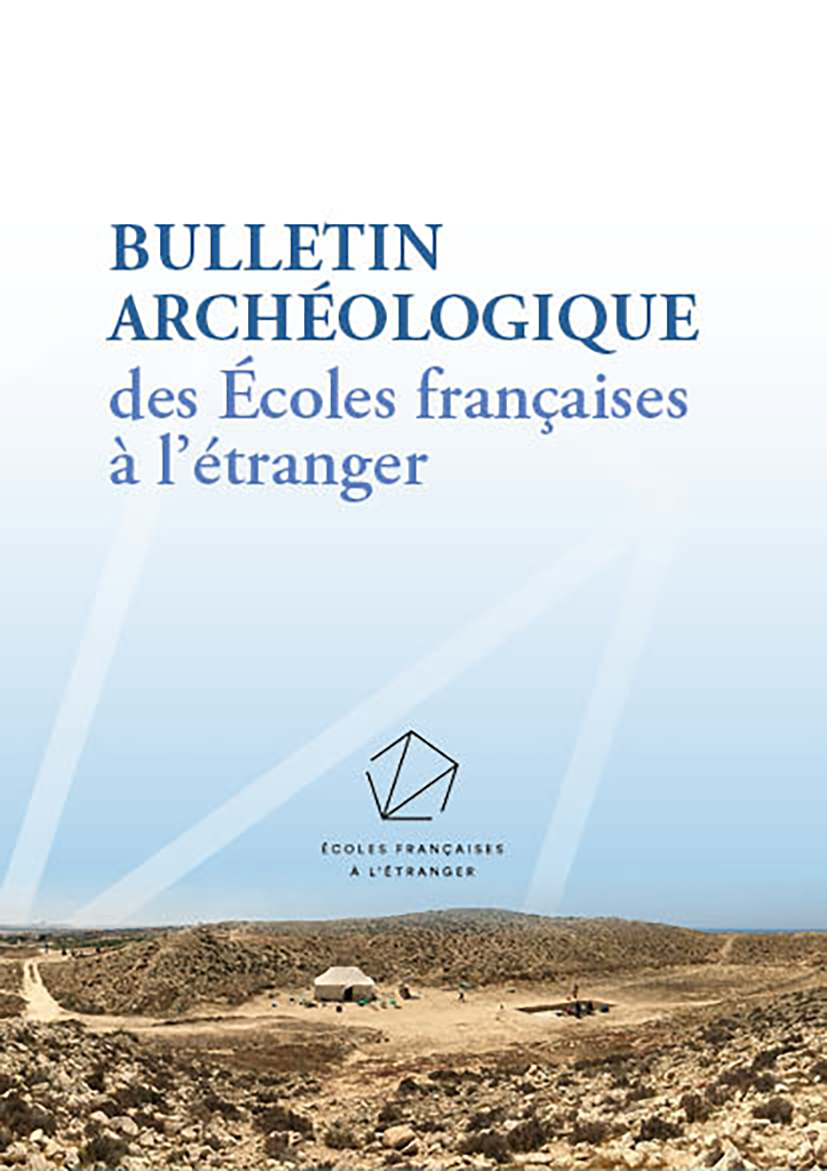
Bulletin archéologique des Écoles françaises à l'étranger (BAEFE) Opérations de terrain Ifao-CEAlex 2022 BAEFE Le Bulletin archéologique des Écoles françaises à l’étranger propose les contributions de l’École française d’Athènes, de l’École française de Rome, de l’Institut français d’archéologie orientale, du Centre d'études alexandrines, de l’École française d’Extrême-Orient et de la Casa de Velázquez réunis au sein du Réseau des Écoles françaises à l’étranger. C’est ainsi toute l’actualité des recherches archéologiques menées par le réseau des … [en savoir plus] 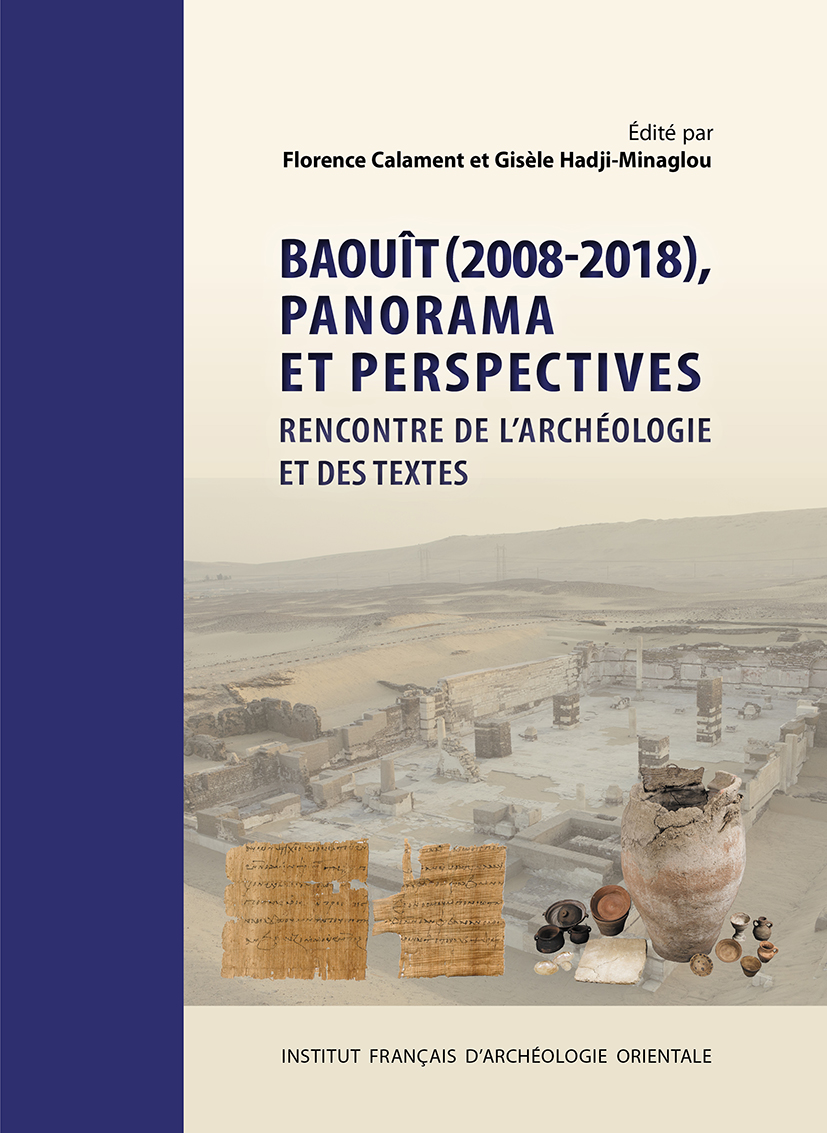
Florence Calament (éd.), Gisèle Hadji-Minaglou (éd.)
Baouît (2008-2018), panorama et perspectives. Rencontre de l'archéologie et des textes Journées d'étude des 7-8 juin 2018 BEC 29; 262 p. Le site monastique de Baouît en Moyenne Égypte fait l’objet depuis 2003 de fouilles archéologiques, menées conjointement par l’Ifao et le musée du Louvre. S’étendant de la période byzantine ayant précédé la Conquête aux premiers siècles de l’époque arabe, il sert plus largement de référence dans la région du Bassin méditerranéen. Des journées d’étude organisées en juin 2018 ont été l’occasion … [en savoir plus] 
Mehdi Berriah (éd.), Clément Onimus (éd.)
Annales islamologiques 56 Ǧihād et fitna. Penser et concevoir la guerre dans le Mašriq médiéval AnIsl 56; 328 p. La division et les bouleversements politiques qu'ont connu les territoires orientaux du Dār al-Islām au Xe siècle, ajoutés à l'irruption de peuples conquérants à partir du XIe siècle et la militarisation progressive du pouvoir, furent à l'origine de nouvelles formes de conflictualités et de discours de la guerre. Dans la continuité de la dynamique amorcée cette dernière décennie … [en savoir plus] 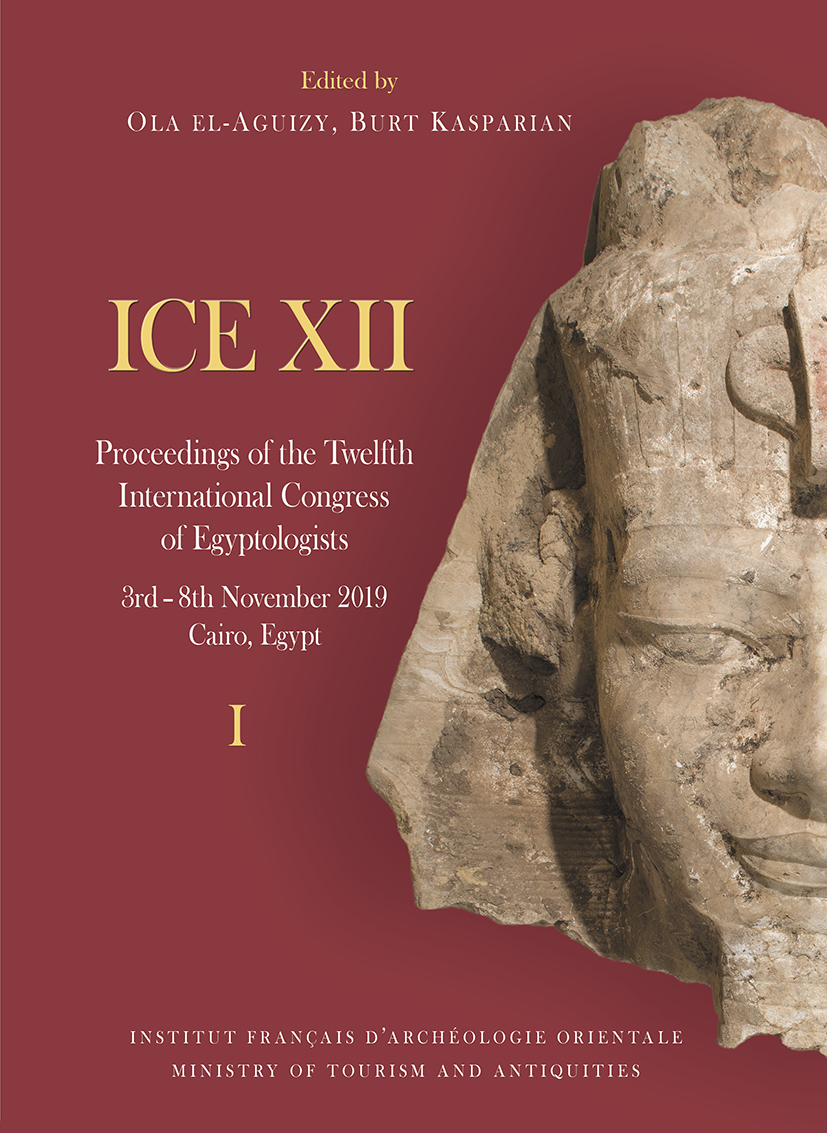
Ola El-Aguizy (éd.), Burt Kasparian (éd.)
ICE XII Proceedings of the Twelfth International Congress of Egyptologists, 3rd - 8th November 2019, Cairo BiGen 71; 1260 p. Le 12e congrès international des égyptologues (ICE) s’est tenu au Caire du 3 au 8 novembre 2019. Pendant ce congrès, 369 communications ont été présentées par les égyptologues de 30 pays, portant sur les thèmes suivants : l’archéologie (méthodes actuelles et fouilles) ; l’art et l’architecture ; la gestion, la conservation et la préservation des sites ; l’histoire ; la langue, la littérature … [en savoir plus] 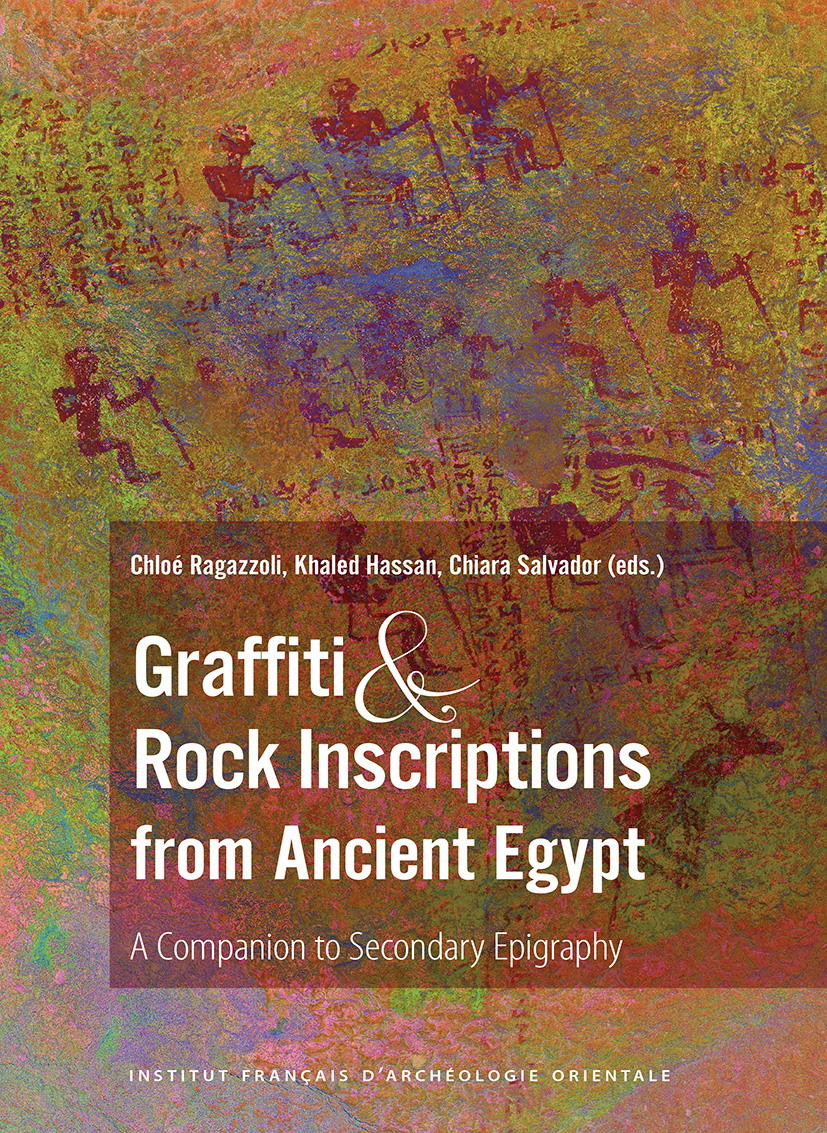
Chloé Ragazzoli (éd.), Khaled Hassan (éd.), Chiara Salvador (éd.)
Graffiti and Rock Inscriptions from Ancient Egypt A Companion to Secondary Epigraphy BiEtud 182; 450 p. Graffiti, dipinti, inscriptions rupestres et autres ajouts sur les murs et les parois rocheuses font partie intégrante du paysage et des pratiques d'écriture de l'Égypte ancienne. Ce livre se concentre sur les marges des corpus épigraphiques traditionnels et vise en effet à fournir une vue d'ensemble des graffiti en Égypte ancienne, allant de l'art rupestre prédynastique dans le désert Oriental aux inscriptions hiératiques dans les tombes de Moyenne Égypte, en passant par les signatures … [en savoir plus] 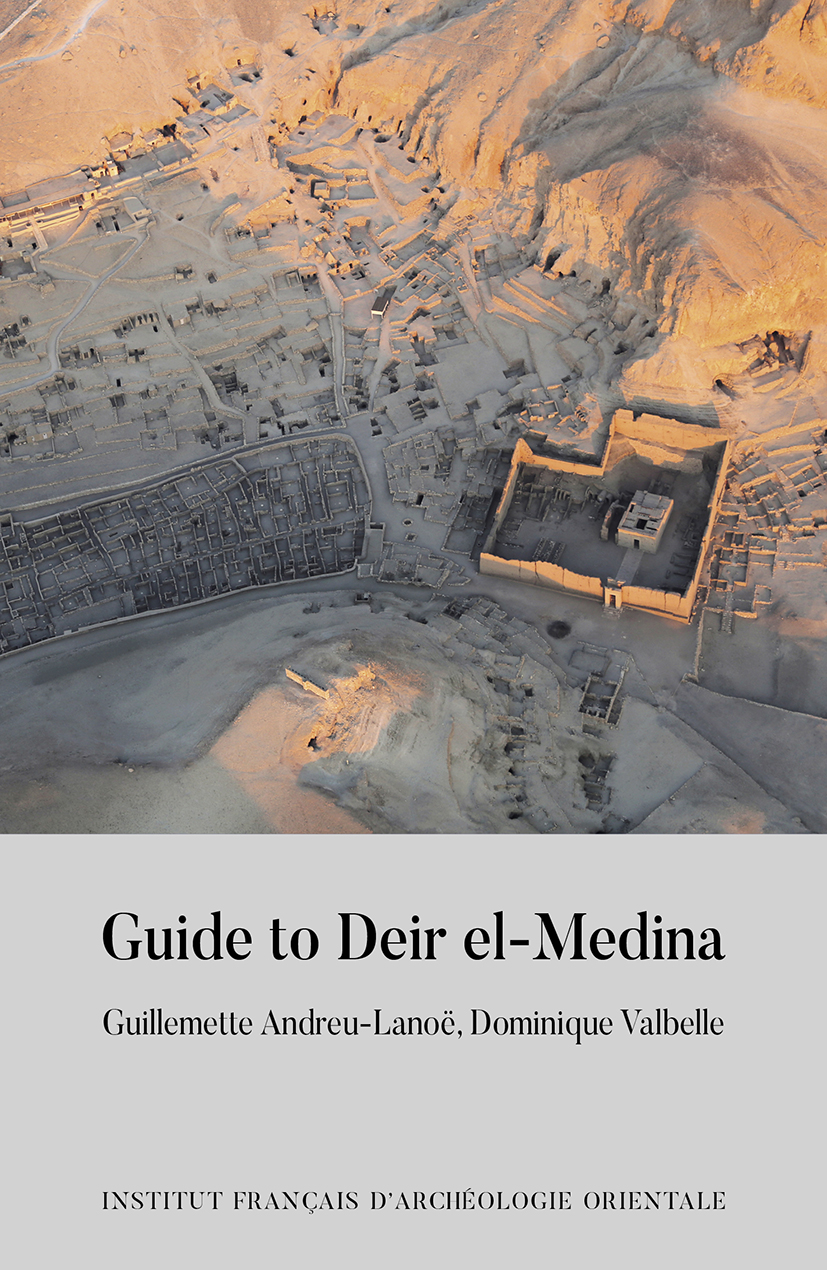
Guillemette Andreu-Lanoë, Dominique Valbelle, Ian Shaw
Guide to Deir el-Medina GIFAO 3; 180 p. Le site de Deir el-Médina est unique : ses vestiges archéologiques, particulièrement bien préservés, forment un ensemble exceptionnel en Égypte (constitué d’un village, d’une nécropole et d’un temple), et la riche documentation qu’il a livrée a traversé les millénaires. Artistes autant qu’artisans, les habitants de Deir el-Médina creusaient et décoraient les hypogées des souverains dans la Vallée des Rois et des Reines. Ils ne se limitaient pas à exercer leurs … [en savoir plus] 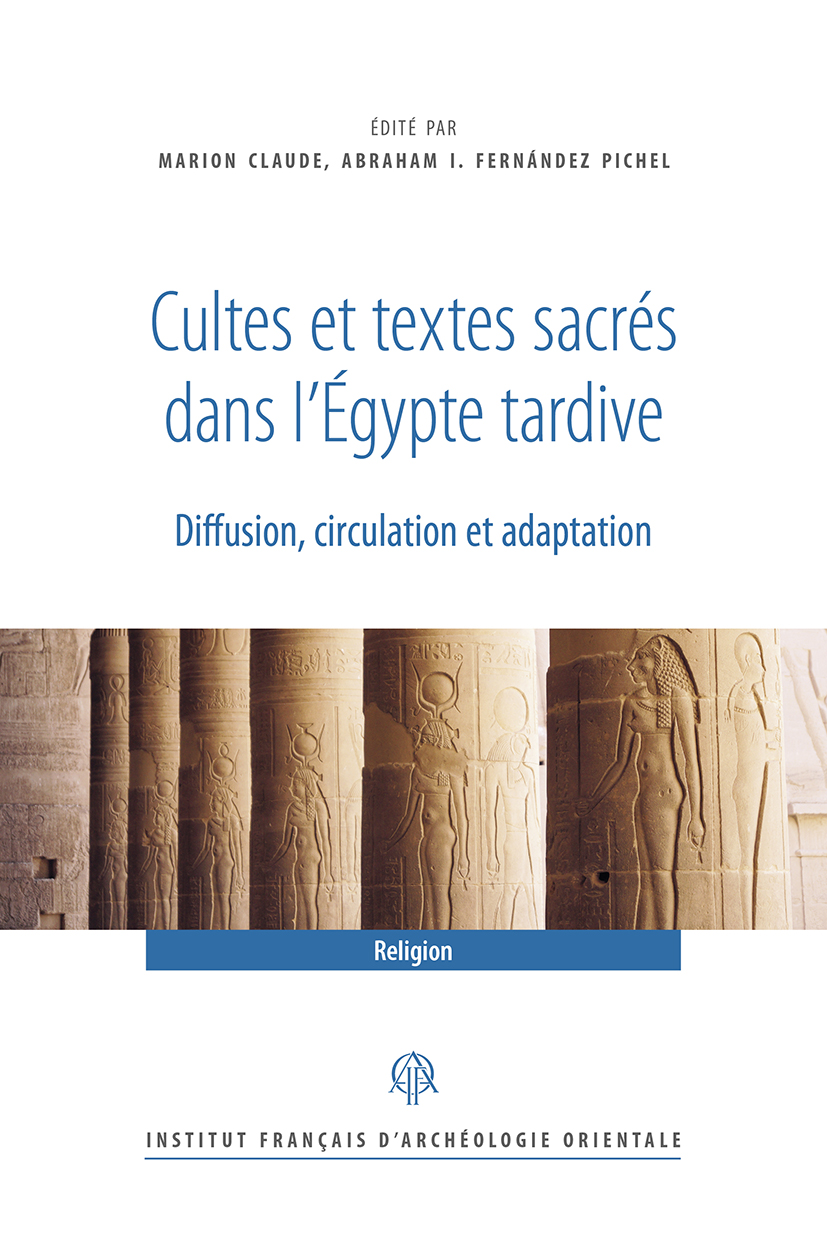
Marion Claude (éd.), Abraham Ignacio Fernández Pichel (éd.)
Cultes et textes sacrés dans l’Égypte tardive Diffusion, circulation et adaptation RAPH 46; 300 p. Les temples égyptiens et leurs clergés, loin de fonctionner comme des entités isolées, faisaient l’objet de nombreux points de contact entre les dieux, comme entre les hommes. Toutefois, bien que ces échanges soient avérés et témoignent d’une certaine universalisation de la religion égyptienne au niveau du pays, chaque clergé local avait à cœur de transformer ces emprunts pour les adapter aux particularités de son panthéon et de ses sanctuaires. De fait, il est souvent difficile … [en savoir plus] 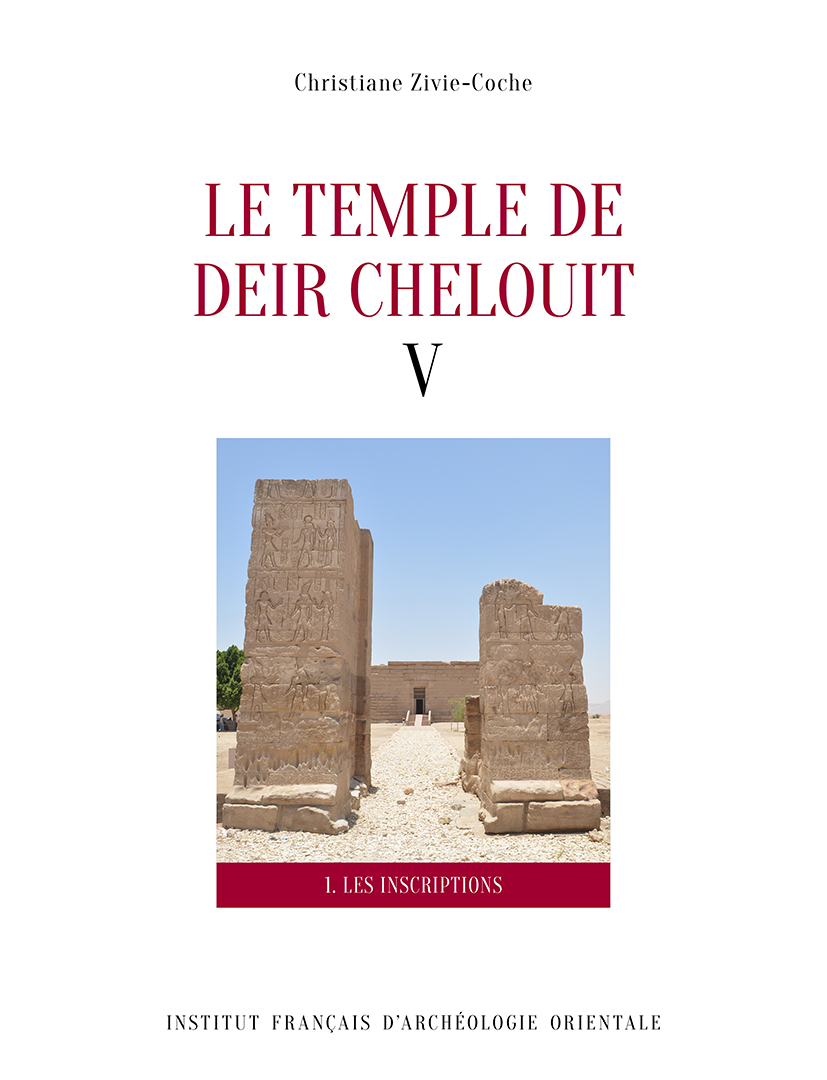
Christiane Zivie-Coche
Le temple de Deir Chelouit V Les inscriptions (vol. 1, édition révisée) / Translittération, traduction et commentaire (vol. 2) Temples, Chelouit 5; 1026 p. Le temple de Deir Chelouit, situé sur la rive gauche thébaine au sud de Médinet Habou, est resté longtemps inédit. Une édition princeps a été publiée dans les années 1980. Depuis, les opérations de nettoyage, menées par l’ARCE, ont rendu les textes beaucoup plus lisibles, ce qui a permis une édition révisée des inscriptions, accompagnée de leur traduction. On accède au temenos par un propylône. Le temple, bâti à l’époque romaine, a été décoré sous Hadrien et … [en savoir plus] 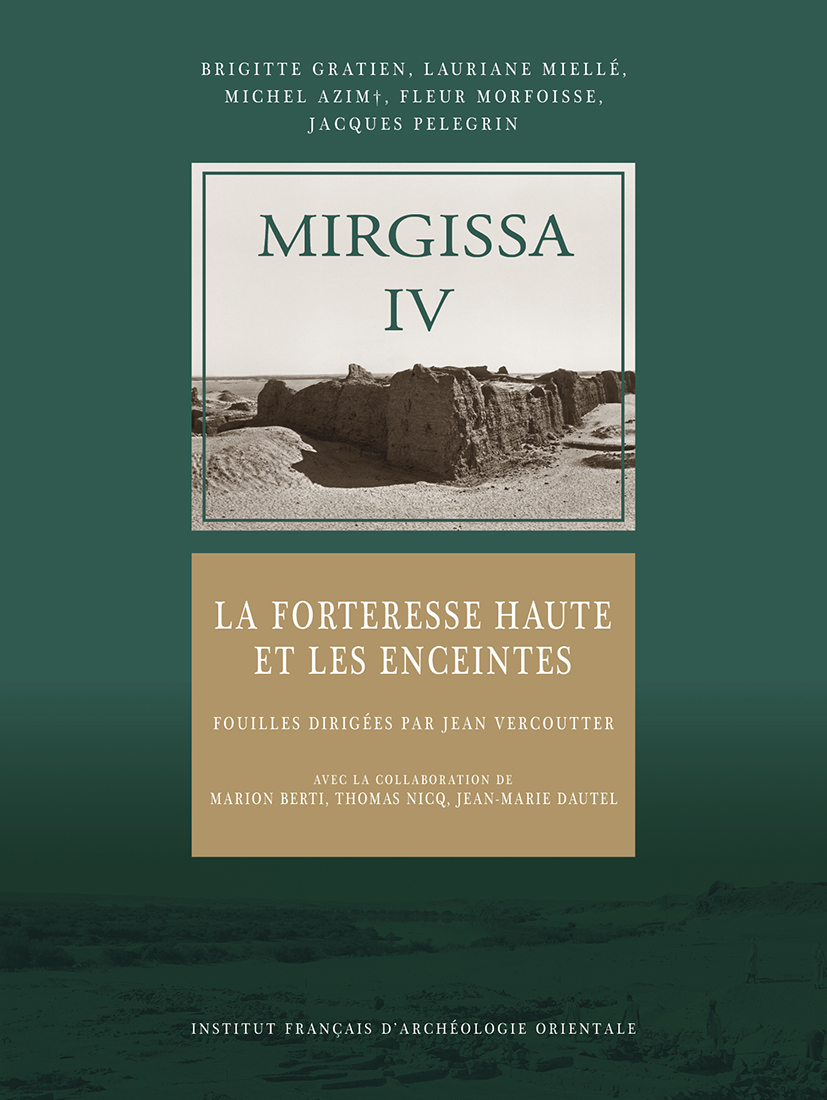
Brigitte Gratien, Lauriane Miellé, Michel Azim, Jacques Pelegrin, Fleur Morfoisse
Mirgissa IV La forteresse haute et les enceintes FIFAO 91; 615 p. Construite au sud des rapides de la deuxième cataracte, la forteresse haute de Mirgissa/Iqen protège ce site de la frontière méridionale de l’Égypte et contrôle les voies fluviales et terrestres ; liée aux enceintes qui entourent les habitats de la plaine, les ateliers et les installations portuaires, elle fut probablement édifiée sous le règne de Sésostris Ier, comme Bouhen plus au nord. C’est un modèle d’architecture militaire du Moyen … [en savoir plus] 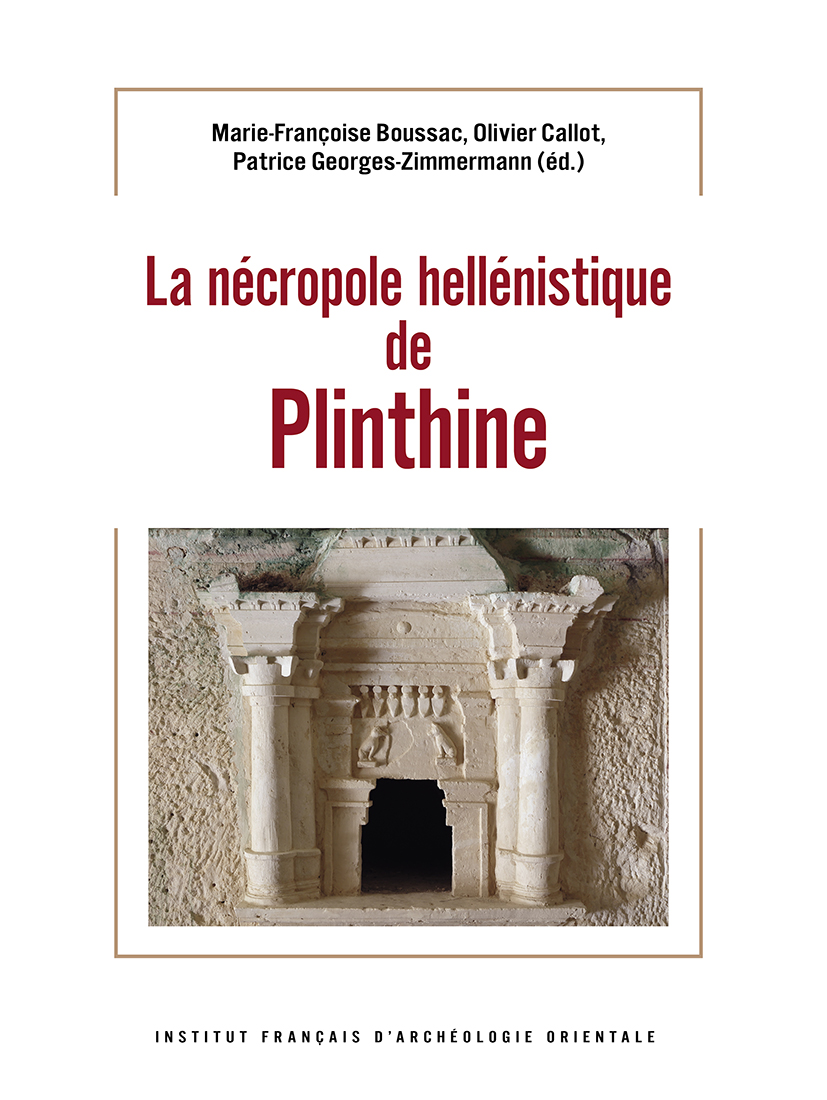
Marie-Françoise Boussac (éd.), Olivier Callot (éd.), Patrice Georges-Zimmermann (éd.)
La nécropole hellénistique de Plinthine FIFAO 90; 616 p. La nécropole hellénistique de Plinthine, située à environ 800 m à l’ouest de l’établissement urbain de Kôm el Nogous/Plinthine, aux marges occidentales de la chôra alexandrine, a été aménagée sur et dans la ride de calcarénite ou ténia qui sépare la Méditerranée du lac Mariout. Elle a été célébrée depuis les premières fouilles par Achille Adriani en 1937, suivies de diverses interventions non publiées, comme une version miniature des grandes nécropoles alexandrines, … [en savoir plus] 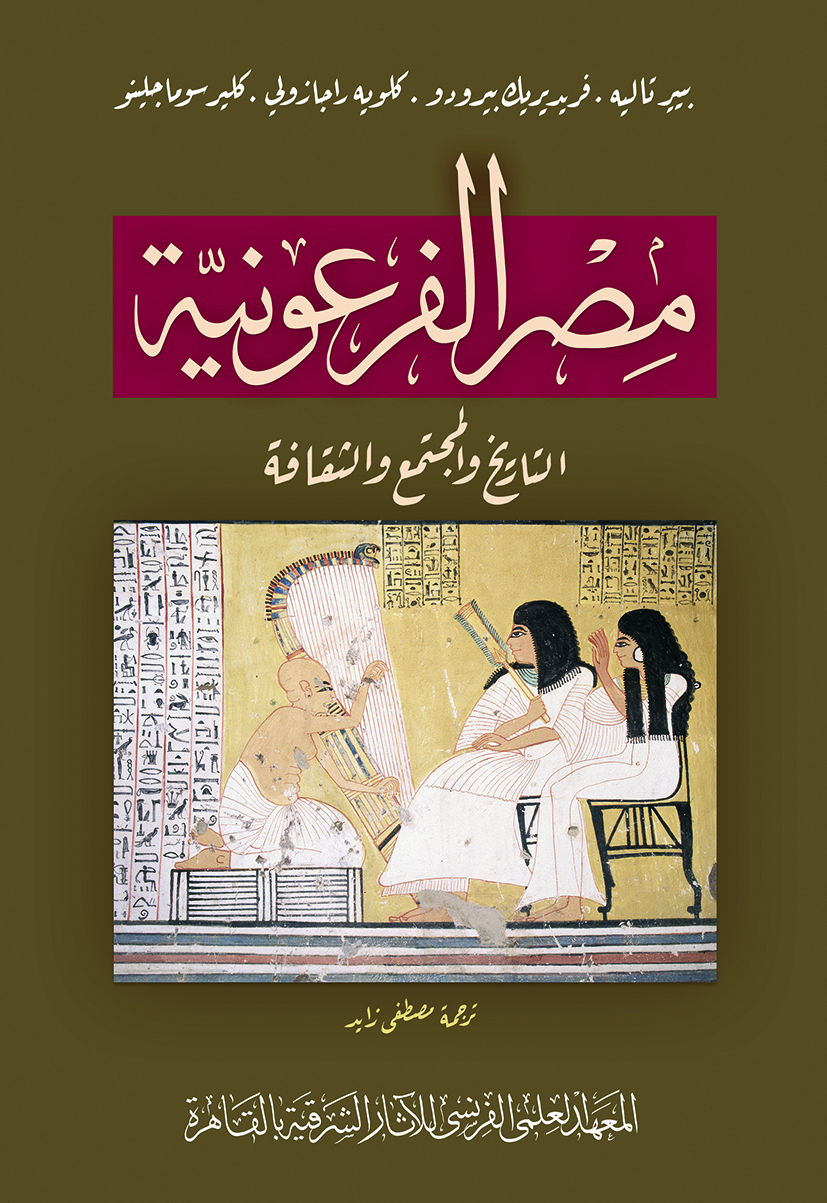
Pierre Tallet, Frédéric Payraudeau, Chloé Ragazzoli, Claire Somaglino
مصر الفرعونية. التاريخ والمجتمع والثقافة L'Égypte pharaonique. Histoire, société, culture (version arabe) BiGen 69; 400 p. Dans la vallée du Nil émerge au terme d’un processus culturel complexe l’un des plus anciens États territoriaux du monde, dirigé par une royauté sacrée et une administration qui se développe et évolue durant les presque 3000 ans qui séparent la Ire dynastie de la conquête romaine. Au-delà de l’image d’une Égypte des pyramides immobile dirigée par un despote tout puissant, les recherches les plus récentes, issues de l’analyse de la documentation écrite et … [en savoir plus] 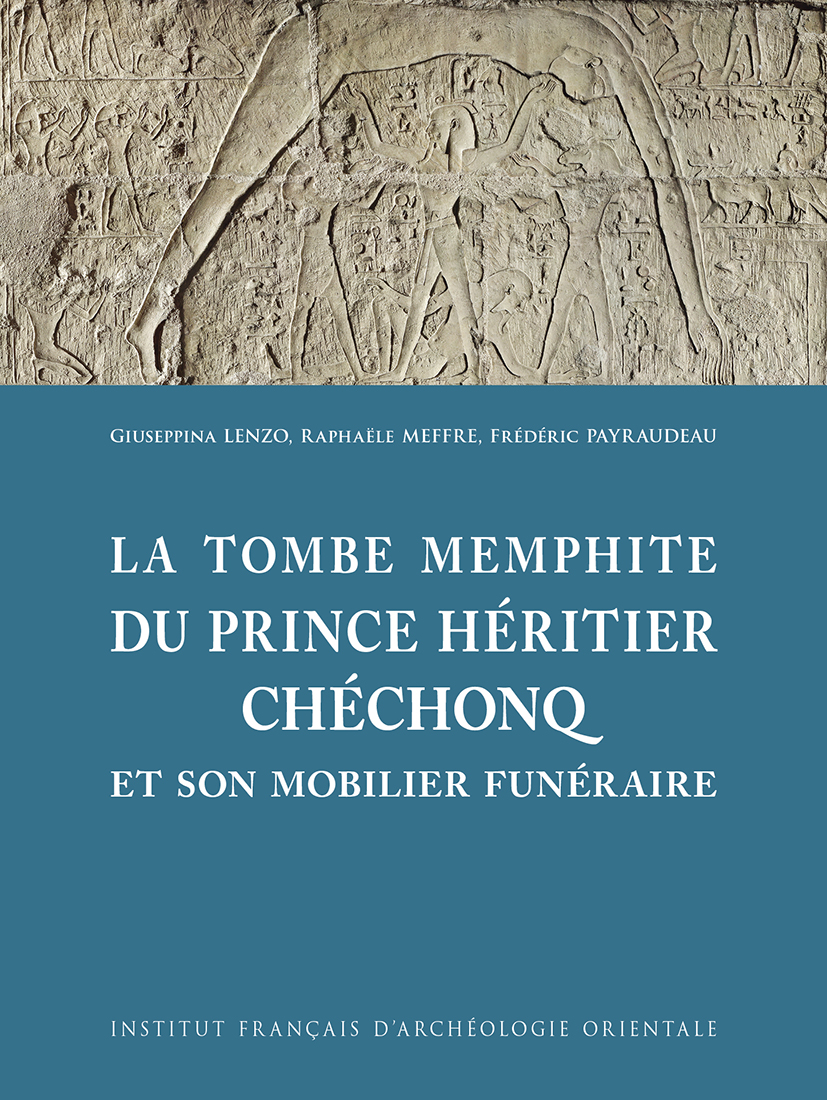
Giuseppina Lenzo, Raphaële Meffre, Frédéric Payraudeau
La tombe memphite du prince héritier Chéchonq et son mobilier funéraire MIFAO 149; 360 p. Cet ouvrage est consacré à la publication de la tombe et du matériel funéraire du fils royal et grand prêtre de Ptah Chéchonq de la XXIIe dynastie (vers 830 avant notre ère). Trouvés à Memphis en 1942, ils ont été déplacés au Musée égyptien du Caire peu après leur découverte. La sépulture constitue l’une des rares tombes décorées de la Troisième Période intermédiaire. Les scènes et les textes funéraires gravés sur ses parois présentent des similarités avec … [en savoir plus] 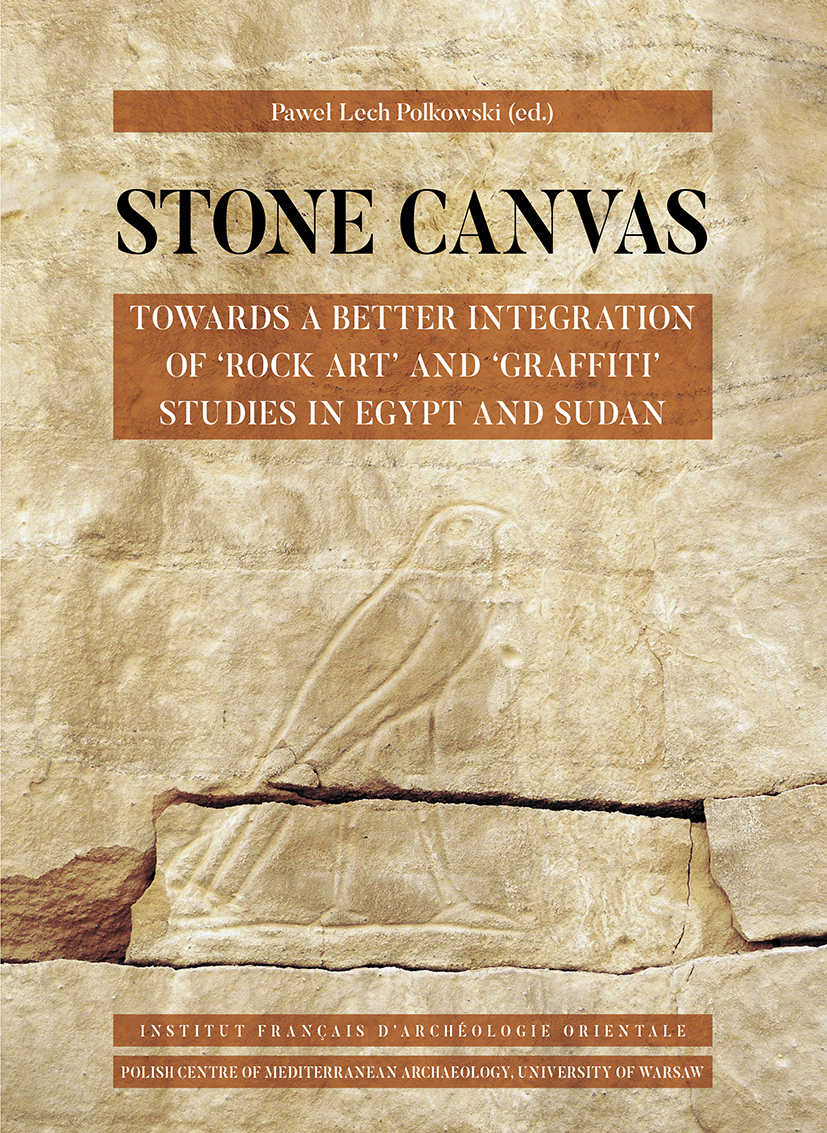
Pawel Lech Polkowski (éd.)
Stone Canvas Towards a better integration of 'rock art' and 'graffiti' studies in Egypt and Sudan BiEtud 183; 368 p. Cet ouvrage présente les actes du colloque sur l’art rupestre et les graffitis en Égypte et au Soudan qui s’est tenu au Caire du 10 au 12 novembre 2019. Le spectre couvert par les contributions est très large, tant sur le plan géographique que chronologique, puisqu’il englobe des sources figuratives et textuelles datant du Paléolithique supérieur, des périodes prédynastique, dynastique et gréco-romaine, jusqu’aux époques chrétienne et islamique. De … [en savoir plus] 
Agnès Charpentier (éd.)
Bulletin critique des Annales islamologiques 37 BCAI 37 Le Bulletin critique des Annales islamologiques (BCAI) vise à rendre compte de toute publication intéressant les études arabes et islamiques dans les divers domaines : langue et littérature arabes, islamologie, philosophie, histoire, histoire des sciences et des techniques, anthropologie et sciences sociales, arts et archéologie. Le BCAI est conçu et préparé par l’équipe Islam médiéval de l’UMR 8167 Orient Méditerranée du CNRS. Il est mis en page et mis … [en savoir plus] 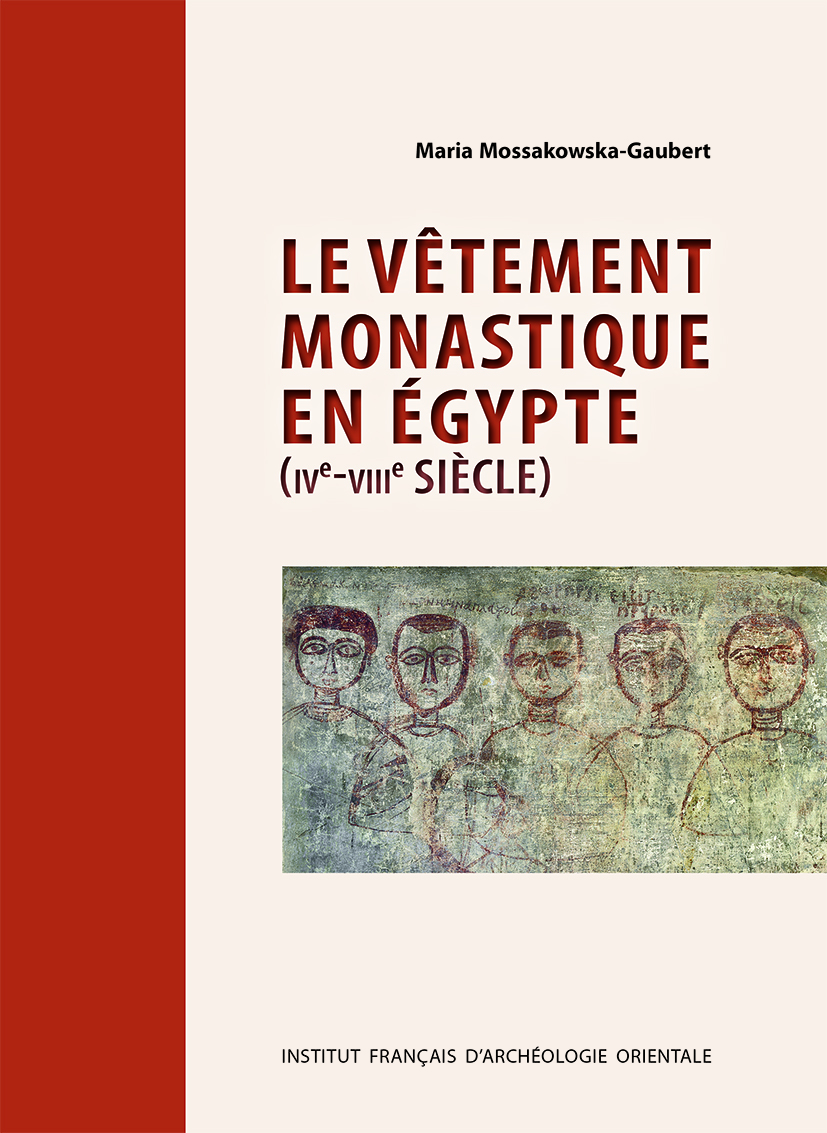
Maria Mossakowska-Gaubert
Le vêtement monastique en Égypte (IVe-VIIIe siècle) BEC 28; 308 p. Cet ouvrage porte sur les coutumes vestimentaires et leur évolution en milieu monastique égyptien dans l’Antiquité tardive et au début de l’époque arabe. Il s’inscrit dans la droite ligne des études qui envisagent les sociétés antiques à travers leurs langues, leur culture matérielle, leur vie quotidienne et leurs pratiques religieuses. Les recherches présentées ici se veulent une contribution à une discussion générale sur les vêtements en Égypte, et ont pour ambition … [en savoir plus] 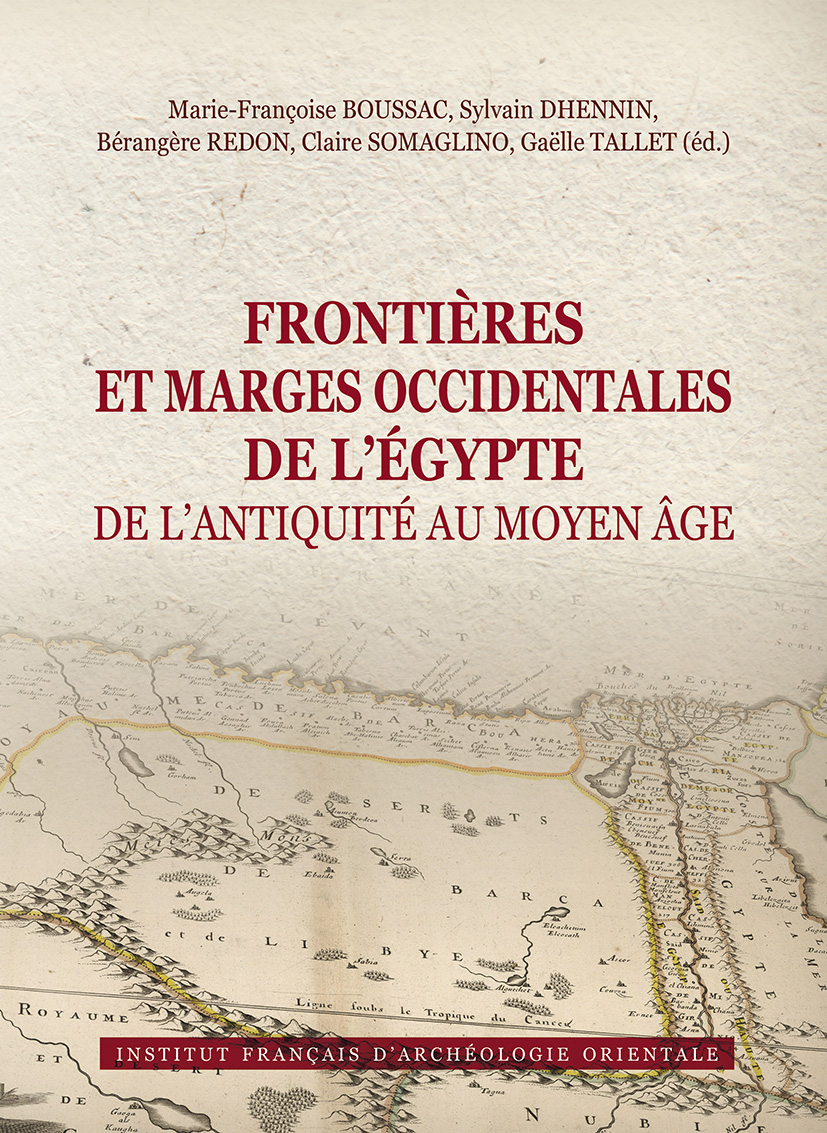
Marie-Françoise Boussac (éd.), Sylvain Dhennin (éd.), Bérangère Redon (éd.), Claire Somaglino (éd.), Gaëlle Tallet (éd.)
Frontières et marges occidentales de l’Égypte de l’Antiquité au Moyen Âge Actes du colloque international, Le Caire, 2-3 décembre 2017 BiEtud 181; 384 p. Y eut-il, aux différentes époques de l’histoire égyptienne, une frontière occidentale clairement définie d’un point de vue culturel et politique ? Comment les limites ouest du territoire égyptien étaient-elles perçues et vécues par le pouvoir central comme par les populations locales ? Dans cette optique, les actes du colloque international du Caire des 2-3 décembre 2017 explorent les marges occidentales de l’Égypte selon quatre axes : 1) définition, conception, … [en savoir plus] 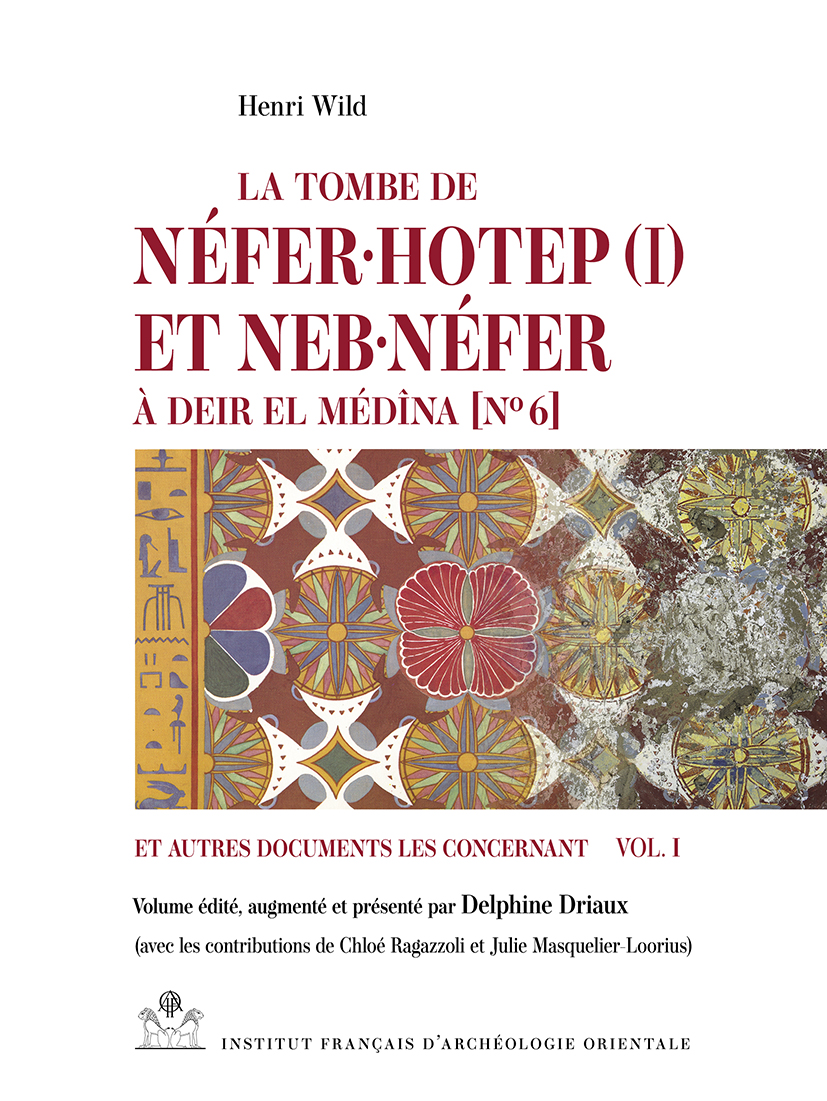
Henri Wild, Delphine Driaux (éd.), Chloé Ragazzoli, Julie Masquelier-Loorius
La tombe de Néfer·hotep (I) et Neb·néfer à Deir el Médîna [N° 6] et autres documents les concernant MIFAO 103.1; 294 p. Pendant de nombreuses années, la tombe thébaine no 6 appartenant à Néfer·hotep (I) et Neb·néfer – deux personnages importants de Deir el Médîna ayant vécu sous les règnes d’Horemheb et des premiers ramessides – ne fut connue que par les dessins au trait exécutés par Henri Wild et rassemblés dans un fascicule paru en 1979 (MIFAO 103/2). Le texte qui devait accompagner ces planches et sur lequel l’égyptologue suisse travailla jusqu’à sa disparition, en … [en savoir plus] |
IFAO Newsletter
July 2023
Sections: (-) Headlines (-) Some questions for Hani Moawad (-) IFAO notebook (-) Scientific Events (-) Scientific Meetings (-) On the IFAO YouTube channel (-) Publications

◼︎ The Great hall of the Mounira Palace after restoration (Photo ©Ihab Ibrahim/Ifao).
Headlines
|
Over the past two years, the Ifao has undergone major renovation, restoration and embellishment work under the efficient direction of Damien Fréjaville, Head of Security and maintenance department. When entering the Mounira palace, staff and visitors now can admire the magnificence of the western façade which was restored and repainted in 2021 - 2022 strictly conforming with the existing façade, which dates back to 1929, the year in which the façade was partly redesigned; specifically, the Art Nouveau decorations were transformed into the neo-classical style. |
||
|
After entering the palace and passing through the reception hall, where the office of the head of reception, Maha Yassin is, and the bookshop, Ifao staff and visitors have recently been able to view the great hall of the grand staircase leading to the library again. Over the past few months, restorers have been focusing on the walls of the main hall, which were restored to their former glory in the week leading up to la Journée de l'archéologie on June 22, and on various areas of the wooden parquet flooring in the hallway leading to the administration department, which had been badly damaged by the passage of time. Further work is scheduled for this summer, including the installation of solar panels on the roof, and the restoration of the library terrace. This type of work has a direct impact on the institute life. For example, work done in the Great Hall and the grand Staircase, has required changes to the way we move around the building, and therefore to the way we organise scientific events and seminars. However, the Ifao's activity has not been affected. On the contrary, activity has never been as frequent and diverse as in the first half of 2023. This is probably due to the end of the catch-up period following the restrictions imposed by COVID-19 in previous years. It is also due to the restructuring of research training, which is now the responsibility of Mathilde Prévost. The Ifao promotes scientific training, particularly in the form of academies (hieratic, papyrological, etc.). It also organises epistemological and methodological seminars for the staff of the Ministry of Tourism and Antiquities (MoTA), such as the seminar "Current developments and methods in History and Archaeology of Ancient Egypt", organised by Mathilde Prevost and Bassem Gehad as part of an Ifao - MoTA partnership. The Ifao logo redesignedThe Ifao logo is inspired by a painting in the tomb of Inherkhâouy (TT359) at Deir el-Medina, two lions, back to back, between their form is the Akhet horizon, behind which the sun rises or sets. For the ancient Egyptians, they "represent yesterday and tomorrow, associated respectively with Osiris and Ra" (Corteggiani, 2007). The solar disk is replaced by the acronym 'Ifao'. The new logo design reflects a desire to modernize the logo that had been in use for around 70 years. By going back to basics, the original lines of the design of Inherkhâouy’s tomb have been drawn more accurately. The acronym is standing out more by superimposing the letters that make it up. Archaeological Sites and Programme NewsThe intensity of activity is also explained by the Ifao's influence, whose scientific program covers around one hundred operations, including almost 35 archaeological missions - as shown below, the French Ambassador in Egypt, Marc Baréty, and his wife, as well as the Director of Studies, Abbès Zouache, and the Head of Archaeology, Joachim Le Bomin have visited the archaeological mission of Tebtynis at Fayoum.
◼︎ Excavations at Tebtynis (Fayoum), campaign 2023, March-April, visit by the French ambassador to Egypt, Marc Baréty - (© A. Bahgat/Ifao) Ten of the fourteen archaeological missions planned for the first half of the year went ahead: the Eastern Desert, Balat, Deir el-Medina, Osirian Sanctuaries at Karnak, Ouadi Sannour, Coptos, Medamoud, Plinthine/Taposiris, Philadelphia and Bouto. Four missions (Baouit, Northern Karnak, Dendara Epigraphy and Ouadi Jarf) had to be cancelled or postponed. At Balat, excavated by the Ifao since 1977, archaeologists resumed fieldwork at Ayn Asil site, north of the 6th Dynasty fortification where the earliest occupations are thought to have taken place. Layers dating back to the 5th dynasty have been identified. The vast majority of scientific missions and events also took place. A number of conferences brought together researchers from different disciplinary backgrounds, and were part of international partnerships, such as the Writing performances conference organised by Chloé Ragazzoli (SU) and Carole Roche (Ifpo). Scientific member Malak Labib and Pascale Ghazaleh (American University of Cairo) also organised an international conference titled Impossible archives? aimed at examining the construction of knowledge on the basis of contemporary Egyptian archives; its importance was hailed by the entire scientific community. The history of the Ifao was highlighted at the conference L'imprimerie et l'Egypte, organised by Fabien Simon (Université Paris Cité) at the Ifao on April 26 and 27. The institute played a key role at the crossroads of typographic circulations in the Mediterranean and beyond, during the long 20th century. |
◼︎ The classic Ifao logo, which has been in use for 70 years, is getting a facelift.
◼︎ Journée de l'archéologie France Égypte 2023.
◼︎ Workshop on the profession of archaeologist with students from the Lycée français du Caire. (© A. Bahgat/Ifao)
◼︎ 'How to conduct a research in Egyptology' training workshop in partnership with Alexandria University (©A. Bahgat/Ifao).
◼︎ Closing conference of the Writings programme at the Ifao in June 2023. |
|
Life at the PalaceWell-being at work The palace has not only been transformed. A range of social activities have also been organized. The idea of promoting well-being in the workplace, and even encouraging the practice of sport outside working hours, was born of formal and informal discussions between Ifao management and staff representatives. It was also a way of developing interaction between staff members, and thus better managing the end of the recent crisis generated by COVID-19, which had restricted interpersonal relations, with the Institute being forced to close on several occasions. Ping-pong and yoga sessions were set up. They quickly proved their worth, particularly in terms of reinforcing relations between staff from different departments. Indeed, they were so successful that a ping-pong tournament was set up in March, involving not only Ifao staff, but also staff from the Institut français d’Egypte. Environmental responsibility The Palace also voiced its support for the initiatives of the eco-responsible group set up in December 2022. This group of volunteers was formed to raise awareness among the staff of the challenges of sustainable development and to promote practical actions. A calendar was prepared, with one theme per month; each time, the subject and proposed objectives were distributed throughout the facility by means of a flyer, and actions (conferences, visits, workshops, presentations, etc.) were organised. In January, for example, the month was dedicated to paper recycling, with recycling litter baskets set up in the library and offices, and collection organised in collaboration with the zabalins (" trash collectors of Cairo "), who gave a lecture on the matter. This was followed by the recycling of other materials in February, alternatives to animal proteins in March (with the implementation of a vegetable garden and compost), alternatives to car use in April, the use of air conditioning and electrical appliances in May, and digital savings in June. |
◼︎ Pingpong tournament organised in March with IFE colleagues (© A. Bahgat/Ifao) ◼︎ The new Ifao vegetable garden (early April 2023) |
|
A few questions for Hani Moawad…
Ifao notebook
ArrivalsFrom January 2023, the following members of staff joined the Ifao: - Sanaa Gaballah, materials physicist, was recruited to the archaeometry division in January. - Nicolas Souchon, an Egyptologist and doctoral student at the École Pratique des Hautes Études, was recruited as an assistant Egyptologist in the archives and scientific collections department. - Mohamed Ahmed Mamdouh was recruited as a gardener in April. Departures- Emad Adly, archaeological chronicler, retired in December 2022. - Abdel Moneim Ali, offset operator at the Ifao printing works, retired in December 2022. |
◼︎ Nicolas Souchon |
◼︎ Sanaa Gaballah |
|
◼︎ Mohamed Ahmed Mamdouh |
||
|
◼︎ Abdel Moneim Ali |
◼︎ Emad Adly |
|
Scientific events
|
|
Les rendez-vous de l'archéologie lectures SeriesIn partnership with the IFE |
|
|
 |
Les conférences de l'Ifao lectures Series |
|
|
|
|
|
Midan Mounira lectures SeriesIn partnership with IFE, CEDEJ and IDÉO |
|
|
|
|
Ifao research seminar |
|
|
|
|
Lecture series: Egyptology Bi-L-ʿarabīOrganised in partnership with "Al-Makân wa-l-Nâs". |
|
|
|
 |
Séminaire : "Qira'at"- Reading historical documents from Egypt, Medieval till modern times (سلسلة ندوات قراءآت )Organised by Prof. Magdi Guirguis |
|
|
|
|
Series of lectures and musical performances: ASWATIn partnership with CEDEJ and IFE |
|
Formations
 |
From 18th to July 19th 2023, IFAO Academies for Young Researchers by : 3rd Riwaq Academy for Young Researchers: What’s new in the Arabic inscriptions and calligraphy?, in partnership with Faculty of Archeology, Ain Shams university [more] |
|
 |
On July 12th 2023, Training by Abbès Zouache (Ifao) & Mathilde Prévost (Ifao), Khaled Younes (University of Sadat City) & Ahmed Nabil (University of Sadat City): An Introduction to Arabic Papyrology [more] |
|
 |
On May 20th 2023, Training by Laurent Coulon, Hassan Selim, Ahmed Mekawy Ouda, Marion Claude et Mathilde Prévost: Methodology of Research and Publication in Egyptology [more] |
|
 |
From April 4th to May 3rd 2023, Training by Mennat-Allah El-Dorry (Ayn Shams University), Agnès Macquin, Mathilde Prévost, Marianne Refaat, Anna-Maria Papanikitas, Omnéya Ali Abdelnaby, Layla Kandil (Ifao).: Training at the Ifao library: How to make the most out of your visit?, in partnership with Ayn Shams University [more] |
|
  |
From February 7th to March 9th 2023, Training by Ayman Fouad Sayed: Formation en codicologie et l’édition critique des textes [more] |
|
 |
On February 20th 2023, Training by : Publishing an international paper in Egyptology [more] |
|
 |
From 6th to February 7th 2023, Training by Florence Albert, Susanne Bickel & Giuseppina Lenzo : Les textes funéraires du Nouvel Empire à la Troisième Période intermédiaire :, in partnership with Fachbereich Ägyptologie, Universität Basel & Institut d’archéologie et des sciences de l’Antiquité, Université de Lausanne [more] |
Exceptional events
 |
On June 22nd 2023, Journée annuelle de l’archéologie française en Égypte by Dominique Garcia, Laurent Coulon, Basem Gehad et Thomas Faucher: Journée de l’archéologie France-Égypte 2023, in partnership with IFE [more] |
Scientific meetings
 |
From 4th to July 6th 2023, International conference organized by Thierry JOFFROY, Audrey CARBONNELLE, David GANDREAU, Alix HUBERT, Nadia LICITRA, Anita QUILES: Nile's Earth, in partnership with École Nationale Supérieure d'Architecture de Grenoble, UMR 5189 Histoire et Sources des Mondes Antiques (CNRS), UMR 8167 Orient & Méditerranée (CNRS) & the International Centre for Earthen Construction (CRAterre) [more] | |
 |
From 20th to June 22nd 2023, International conference organized by Chloé Ragazzoli & Carole Roche-Hawley: Writing Performances, in partnership with Orient et Méditerranée - UMR 8167 & IFPO [more] | |
 |
From 26th to April 27th 2023, International conference organized by Fabien Simon - فابيان سيمون: L’imprimerie et l’Egypte : circulations typographiques méditerranéennes durant le long XIXe siècle, in partnership with Université Paris Cité [more] | |
 |
From 7th to March 8th 2023, Research Workshop by Anita Quiles: Kettân : towards a fine exploration of the ultrastructure of ancient flax fibres and yarns : Characterization and Dating, in partnership with Synchrotron SOLEIL, Université de Bretagne Sud (UBS) - Institut de Recherche Dupuy de Lôme, Musée du Louvre ; University of Cambridge, Centre for Natural Material Innovation , French National Institute for Agronomic Researches and Environment (INRAE) - The [more] | |
 |
From 5th to March 9th 2023, International conference organized by Lajos Berkes (New Testament Studies, HU Berlin); Ursula Hammed (Arabic and Islamic Studies, LMU Munich); Maher A. Eissa (Egyptology, Fayoum University); Andreas Kaplony (Arabic and Islamic Studies, LMU Munich); Marie Legendre (Islamic and Middle Eastern S: ISAP IX Conference 2023 [more] | |
 |
From 16th to June 17th 2023, International conference organized by Pascale Ghazaleh (AUC) & Malak Labib (Ifao) : Impossible Archives? Rewriting the Contemporary in Egypt [more] | |
 |
On March 21st 2023, Seminar organized by Ursula Verhoeven (JGU Mainz) and Svenja A. Gülden (TU Darmstadt): Hieratic paleography: tasks and methods [more] | |
 |
On March 17th 2023, Study Day by Corinne Bonnet (Université de Toulouse), Laurent Coulon (Institut français d’archéologie orientale, EPHE, PSL) et Giuseppina Lenzo (Université de Lausanne): Les épithètes topiques des dieux antiques : [more] | |
 |
On January 26th 2023, Study Day by Dietrich Raue, Cédric Larcher & Kathrin Gabler: Current Research in Deir el-Medina, in partnership with DAIK [more] |
On the Ifao Youtube channel
Publications

Bulletin archéologique des Écoles françaises à l'étranger (BAEFE) Opérations de terrain Ifao-CEAlex 2022 BAEFE [more] 
Florence Calament (éd.), Gisèle Hadji-Minaglou (éd.)
Baouît (2008-2018), panorama et perspectives. Rencontre de l'archéologie et des textes Journées d'étude des 7-8 juin 2018 BEC 29; 262 p. The monastic site of Baouit in Middle Egypt has been the target of archaeological excavations since 2003, conducted jointly by the IFAO and the Louvre. With activity extending from the Byzantine period preceding the Arab conquest to the first centuries of the Arab period, the site serves more broadly as a reference for the Mediterranean basin region. The conference organized in June, 2018, provided an opportunity to present recent … [more] 
Mehdi Berriah (éd.), Clément Onimus (éd.)
Annales islamologiques 56 Ǧihād et fitna. Penser et concevoir la guerre dans le Mašriq médiéval AnIsl 56; 328 p. The division and political upheavals experienced by the eastern territories of the Dār al-Islām in the tenth century CE were factors that complicated the social and political, when they experienced an irruption of conquering peoples from the eleventh century onwards. Another factor at play with regard to this dynamic was the gradual militarization of powerful elites. These elites initiated new forms of conflict and framed … [more] 
Ola El-Aguizy (éd.), Burt Kasparian (éd.)
ICE XII Proceedings of the Twelfth International Congress of Egyptologists, 3rd - 8th November 2019, Cairo BiGen 71; 1260 p. The 12th International Congress of Egyptologists (ICE) was held in Cairo from the 3rd to the 8th of November, 2019. During the Congress, Egyptologists from 30 countries presented 369 papers covering nine themes: archaeology (current methods and fieldwork); art and architecture; site management, conservation and preservation; history; views on the Egyptian past; language, literature and texts; archaeological science and technology; … [more] 
Chloé Ragazzoli (éd.), Khaled Hassan (éd.), Chiara Salvador (éd.)
Graffiti and Rock Inscriptions from Ancient Egypt A Companion to Secondary Epigraphy BiEtud 182; 450 p. Graffiti, dipinti, rock-inscriptions and other additions to walls and rocks are integral to the landscape and writing practices of ancient Egypt. This book focuses on the margins of traditional ancient Egyptian epigraphic corpora. It aims to provide an all-encompassing view of graffiti practices and corpora in ancient Egypt, ranging from predynastic rock art in the Eastern Desert, to hieratic inscriptions in Middle Egyptian tombs, and demotic signatures in Karnak temple. A range of specialists … [more] 
Guillemette Andreu-Lanoë, Dominique Valbelle, Ian Shaw
Guide to Deir el-Medina GIFAO 3; 180 p. The site of Deir el-Medina is unique in its particularly well-preserved archaeological remains, which represent an exceptional ensemble in Egypt (consisting of a village, a necropolis and a temple), and in the rich documentation that it has delivered across the millennia. The inhabitants of Deir el-Medina—artists as well as craftsmen—dug and decorated the hypogea of the sovereigns in the Valley of the Kings and Queens. They did not restrict the use of their talents to … [more] 
Marion Claude (éd.), Abraham Ignacio Fernández Pichel (éd.)
Cultes et textes sacrés dans l’Égypte tardive Diffusion, circulation et adaptation RAPH 46; 300 p. Far from being isolated units, ancient Egyptian temples were places of numerous points of contact among deities and among men. While these links are well known and tend to show a measure of universality in Egyptian religion throughout the country, each local clergy was intent on modifying this common background to adapt it to the specificity of its own pantheon and sanctuaries. Indeed, it is often difficult to determine with any certainty the precise origin of this … [more] 
Christiane Zivie-Coche
Le temple de Deir Chelouit V Les inscriptions (vol. 1, édition révisée) / Translittération, traduction et commentaire (vol. 2) Temples, Chelouit 5; 1026 p. The temple of Deir Cheluit is situated on the west bank of the Nile in Thebes, south of Medinet Habu. It remained unpublished for a long time. A first edition was published during the 1980s. The recent cleaning carried out by the ARCE is the basis of a revised edition of the inscriptions with their translation. The access to the temenos is through a propylon. The temple, built during the Roman period, was decorated under Hadrian and Antoninus. The decoration … [more] 
Brigitte Gratien, Lauriane Miellé, Michel Azim, Jacques Pelegrin, Fleur Morfoisse
Mirgissa IV La forteresse haute et les enceintes FIFAO 91; 615 p. Built south of the rapids of the Second Cataract, the Upper Fortress of Mirgissa/Iqen protected this site on Egypt’s southern frontier and controlled river and desert roads. It was linked to the enclosure walls surrounding the settlements, the workshops and the harbour in the lower parts of the site. It was probably built under the reign of Senwosret I, as was the fortress Buhen further north. It is a good example of Middle Kingdom’s military architecture with … [more] 
Marie-Françoise Boussac (éd.), Olivier Callot (éd.), Patrice Georges-Zimmermann (éd.)
La nécropole hellénistique de Plinthine FIFAO 90; 616 p. The Hellenistic necropolis of Plinthine, located about 800 m west of the urban settlement of Kom el Nogus/Plinthine, on the western margins of the Alexandrian chora, was built on and in the calcarenite ridge or taenia that separates the Mediterranean from Lake Mariut. It has been celebrated as a miniature version of the great Alexandrian necropolises since the first excavations by Achille Adriani in 1937, followed by various unpublished explorations. Nevertheless, it had not been the subject … [more] 
Pierre Tallet, Frédéric Payraudeau, Chloé Ragazzoli, Claire Somaglino
مصر الفرعونية. التاريخ والمجتمع والثقافة L'Égypte pharaonique. Histoire, société, culture (version arabe) BiGen 69; 400 p. Traduction : Mostafa Zayed Note de l'éditeur : un comité scientifique a été constitué pour accompagner la traduction, avec le soutien du projet OpenTraduction et sous l'égide du Ministère de l'Enseignement supérieur et de la recherche. 
Giuseppina Lenzo, Raphaële Meffre, Frédéric Payraudeau
La tombe memphite du prince héritier Chéchonq et son mobilier funéraire MIFAO 149; 360 p. This book is devoted to the publication of the tomb and funerary ensemble of the king’s son and High Priest of Ptah Sheshonq (22nd Dynasty, c. 830 BCE). The tomb and its contents were found in Memphis in 1942. They were moved to the Egyptian Museum in Cairo soon after the discovery. The tomb is one of the few decorated tombs from the Third Intermediate Period. The scenes and funerary texts carved on the walls have important similarities with those of the tomb of pharaoh Osorkon II in … [more] 
Pawel Lech Polkowski (éd.)
Stone Canvas Towards a better integration of 'rock art' and 'graffiti' studies in Egypt and Sudan BiEtud 183; 368 p. This book presents proceedings of the conference devoted to rock art and graffiti studies in Egypt and Sudan that took place in Cairo from 10th to 12th November, 2019. The thematic spectrum of the contributions is very wide in terms of both their geographical and their chronological range, encompassing figural and textual sources dating from the Late Palaeolithic through the Predynastic, Dynastic, and Graeco-Roman periods, up to Christian and Islamic times. Many of the papers combine … [more] 
Agnès Charpentier (éd.)
Bulletin critique des Annales islamologiques 37 BCAI 37 The Bulletin critique des Annales islamologiques takes into account all publications of interest to Arab and Islamic studies in a variety of domains: Arabic language and literature, Islamic studies, philosophy, history, history of science and technology, anthropology and social sciences, arts and archaeology. It is edited by the team of Islam médiéval (UMR 8167 Orient Méditerranée - CNRS) and published on line by IFAO. The journal is now available on the … [more] 
Maria Mossakowska-Gaubert
Le vêtement monastique en Égypte (IVe-VIIIe siècle) BEC 28; 308 p. This book focuses on clothing customs and their evolution in the Egyptian monastic environment of late antiquity and the early Arab period. It falls within the realm of studies on ancient societies as seen through their languages, material culture, daily life and religious practices. The research presented here contributes to a general discussion on the clothing worn in Egypt and its role as a social marker. The designations and forms of monastic vestments are explored through a meticulous … [more] 
Marie-Françoise Boussac (éd.), Sylvain Dhennin (éd.), Bérangère Redon (éd.), Claire Somaglino (éd.), Gaëlle Tallet (éd.)
Frontières et marges occidentales de l’Égypte de l’Antiquité au Moyen Âge Actes du colloque international, Le Caire, 2-3 décembre 2017 BiEtud 181; 384 p. Was there, in different periods of Egyptian history, a clearly defined political and cultural western border? How was the western limit of Egyptian territory perceived and experienced by the central power and local populations? Keeping these questions in mind, the proceedings of the international conference held in Cairo on 2-3 December 2017 explore the western margins of Egypt along four lines: 1) definition, conception, representation; 2) occupation, control, … [more] 
Henri Wild, Delphine Driaux (éd.), Chloé Ragazzoli, Julie Masquelier-Loorius
La tombe de Néfer·hotep (I) et Neb·néfer à Deir el Médîna [N° 6] et autres documents les concernant MIFAO 103.1; 294 p. For many years, the Theban tomb no. 6 belonging to Nefer-hotep (I) and Neb-nefer – two important figures from Deir el Médîna who lived under the reigns of Horemheb and the first Ramessides – was only known through the drawings made by Henri Wild, which were published in 1979 (MIFAO 103/2). The Swiss Egyptologist worked until his death in 1983 on the text that was supposed to accompany these drawings, but the manuscript was never published. It was kept in the Archives and Collections … [more] |





.jpg)




.jpg)
.jpg)













